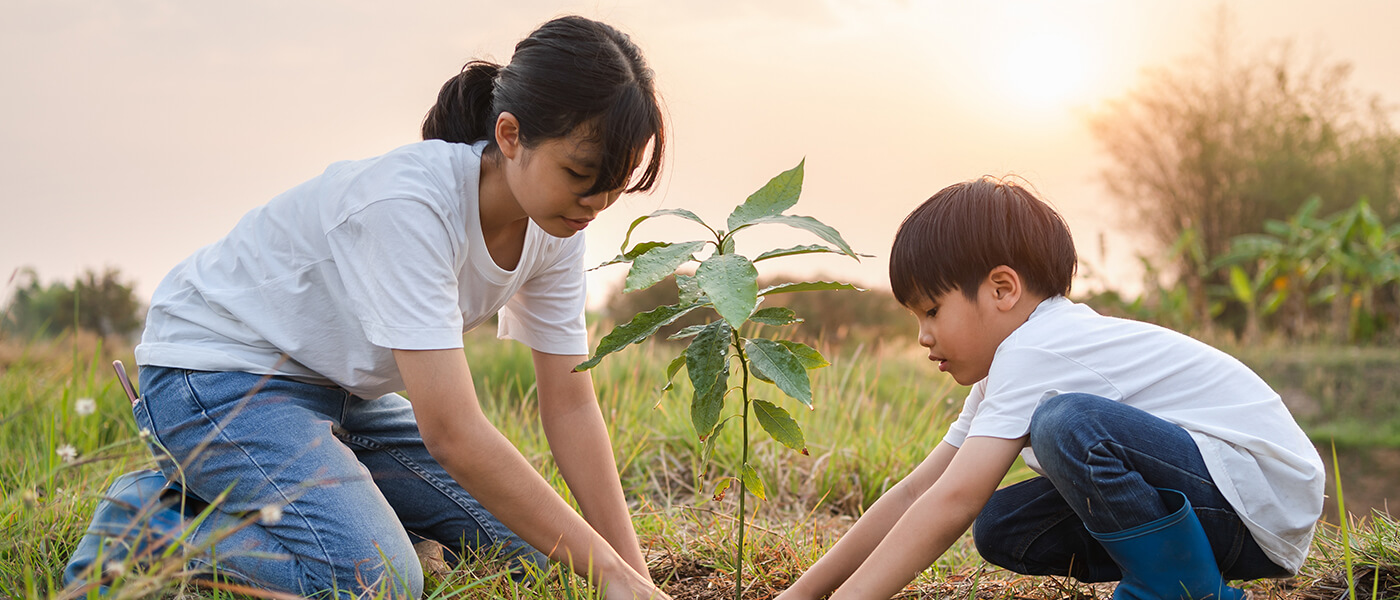Seed The Future — 3 Ways you can conserve our green heritage
- Home
- Residential
- Blog
- Archive by Category "Knowledge" (
- Page 3 )
[Post Date]
Seed The Future — 3 Ways you can conserve our green heritage
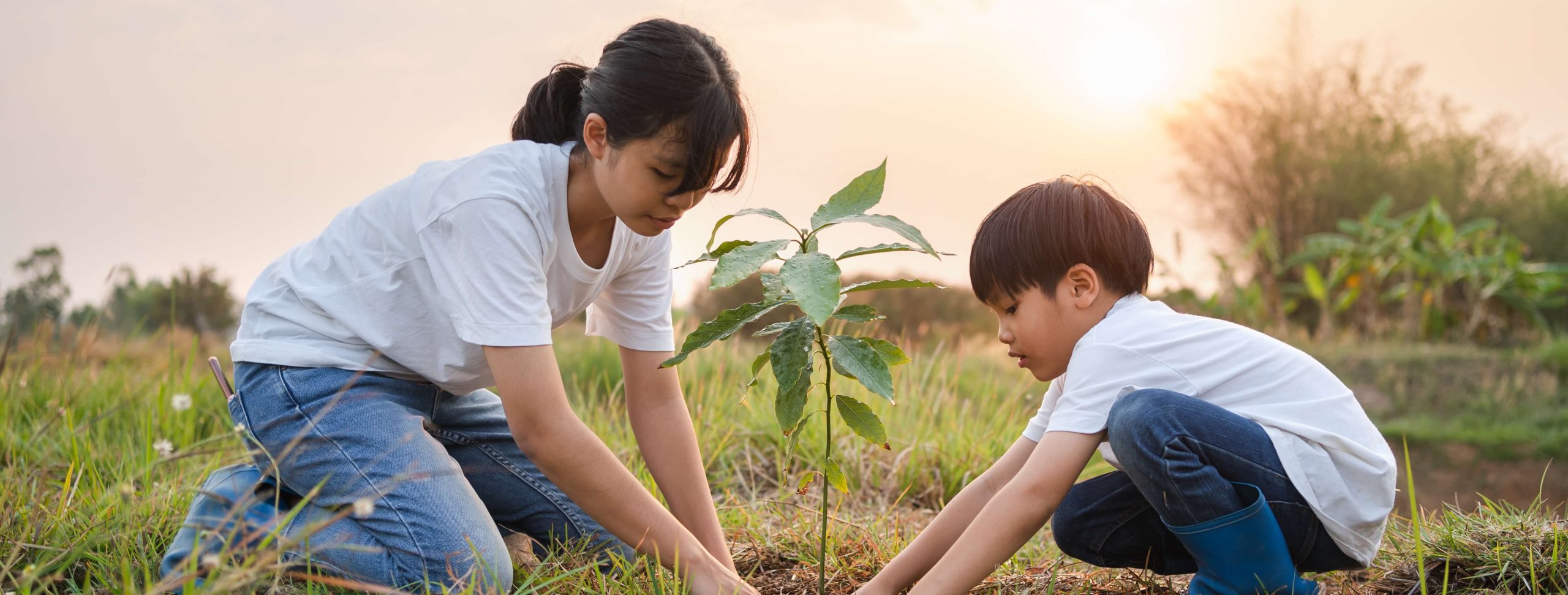
Singapore has a huge array of botanical biodiversity, with over 4,600 floral species and approximately 1,612 native plant species found all around our country. Thanks to the initiatives and decades of hard work put in by our government and stakeholders since the 1960s, we can enjoy and revel in the lush nature and vibrant life that surrounds us today.
Today, the pursuit of transforming our country into a sustainable City in Nature is still gaining traction, with new nature parks being opened and mangrove restoration projects kicking off. As we celebrate the International Day of Forests today, let’s all take this opportunity to appreciate our natural green spaces and play our part to protect it. We’ve put together three easy ideas for you to start making a difference and contributing to the preservation of our green heritage.
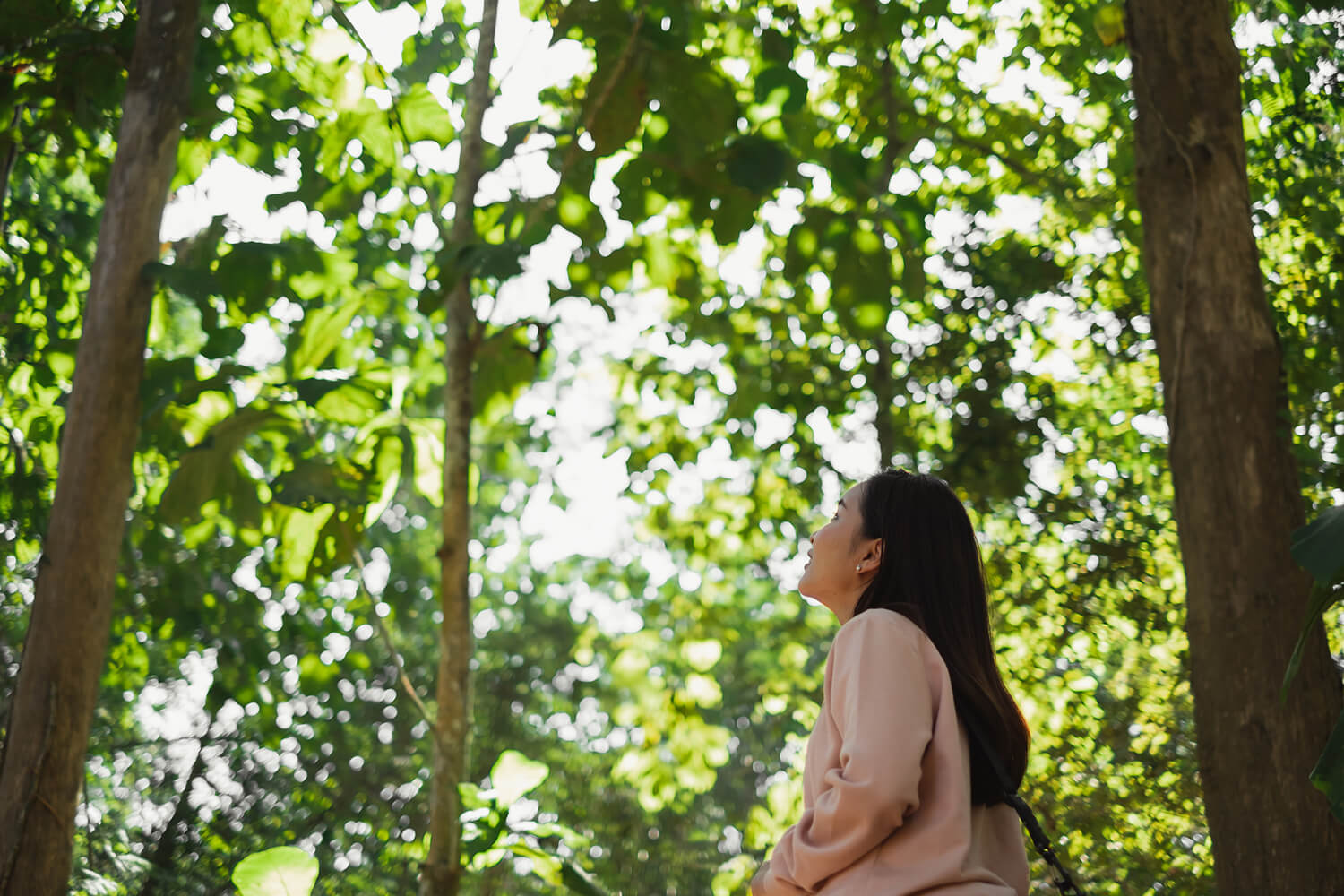
1. Learn about the different tree species around us with TreesSG
Beyond providing cooler air temperatures in Singapore’s hot and humid climate, trees help to mitigate the effects of urbanisation by reducing air pollution and providing habitats for wildlife. With approximately 7 million trees in Singapore, there is much that we can learn about the lush greenery around us.
As part of the OneMillionTrees Movement that aims to restore nature back into our city by planting an additional one million trees across Singapore over the next 10 years, TreesSG is a resource powered by National Parks Board (NParks) that can help you learn about Singapore’s urban trees on an interactive map.
For those who love an on-ground adventure, TreesSG has downloadable DIY Trails with specially designed routes that allow you to navigate your way around our Heritage Trees at your own pace. If you’re curious about the trees you see everyday, you can even gain insights about the trees in your neighbourhood with the TreesSG interactive map. Simply click on any tree on the map to learn about its name and characteristics, and the benefits it provides. You can even use the map to share your sightings of flowering trees with your own tree photos!
If you’d like to contribute to the movement, you can also make a donation to NParks’ registered charity and IPC, Garden City Fund, which will go towards reforestation efforts and help restore degraded ecosystems. With a simple donation covering the cost of a single tree, NParks will help to plant a tree around the heartlands of Singapore. If you are interested, you can participate through TreesSG’s website.
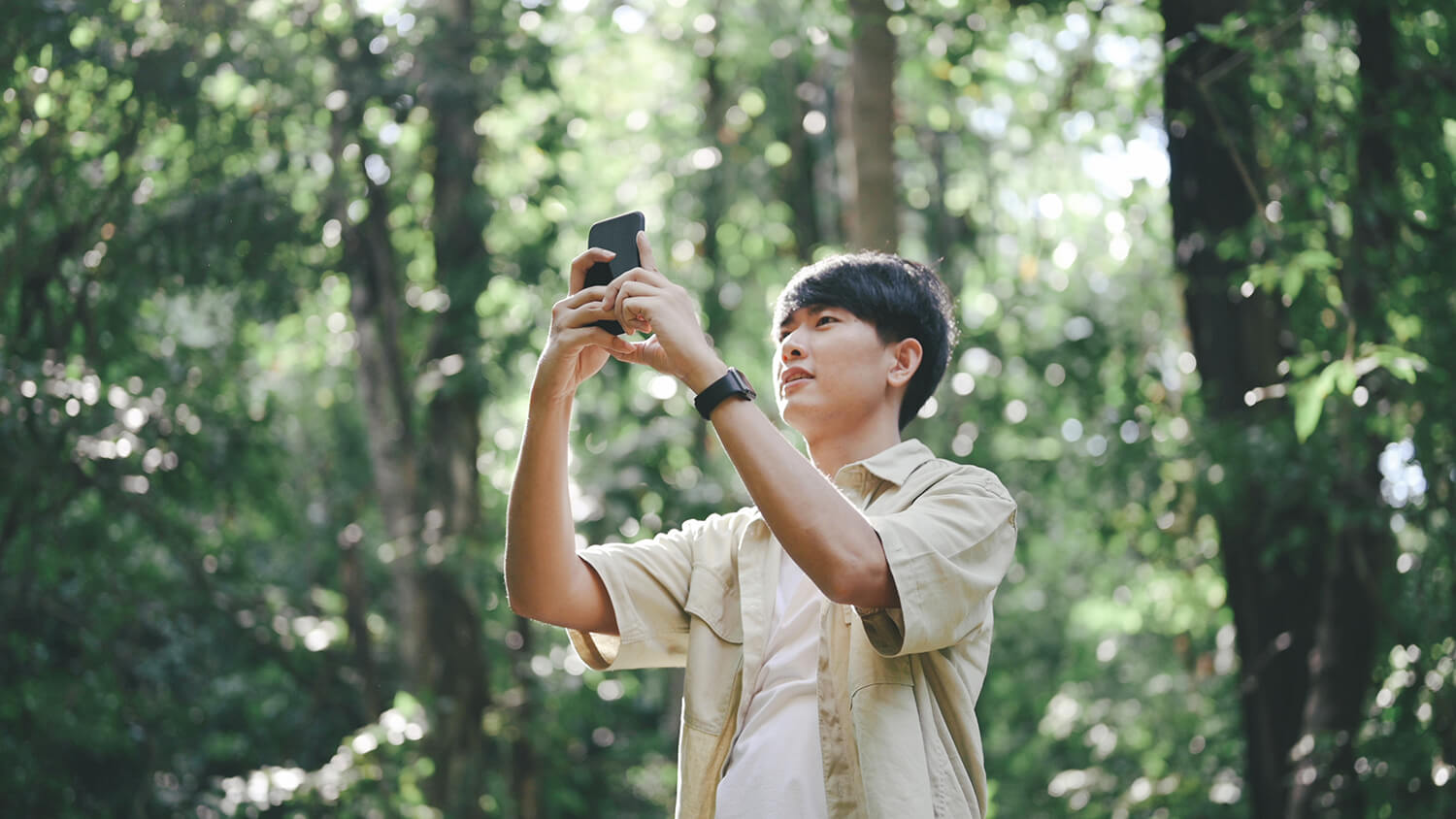
2. Start visiting our Nature Ways
To encourage ecological connectivity and connect fragmented habitats that may have been previously destroyed by deforestation, NParks started rolling out the “Rewilding Plan”, by progressively planting native trees, shrubs and wildflowers along stretches of our nature corridors and green spaces. Part of the Rewilding Plan includes the implementation of multi-tiered tree planting to resemble natural structures of forests and create natural pathways, and these routes are called Nature Ways.
Intricately planted with specific trees and shrubs to facilitate the movement of animals like birds and butterflies between green spaces, Nature Ways connect areas of high biodiversity to urban communities, create immediate habitats, and bring nature closer to Singapore residents. There are currently 49 Nature Ways in Singapore, stretching 170 km and connecting areas of high biodiversity, such as the Central Catchment Nature Reserve and Bukit Timah Nature Reserve. By 2030, NParks aims to increase these pathways to 300 km.
If you haven’t made plans this weekend, why not explore one of the Nature Ways in Singapore? You can visit their website to find out more about the important layers that are incorporated in each Nature Way, and find out where these Nature Ways are before you embark on your adventure.
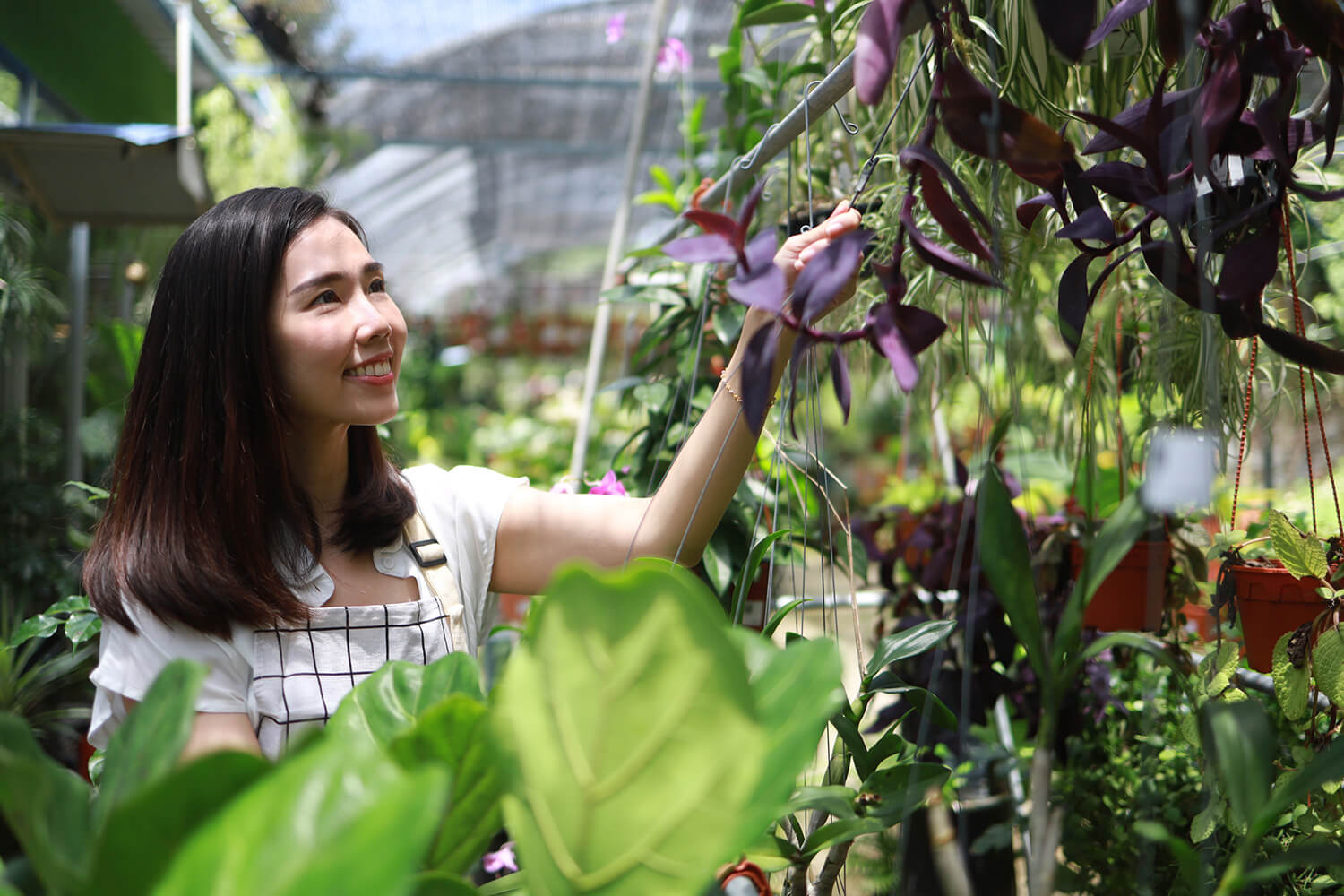
3. Volunteer at the Singapore Botanic Gardens
Singapore is well-known for its abundant green spaces, and one horticultural attraction that continues to be a popular destination for tourists and locals alike is the Botanic Gardens. With decades of history and over 82 hectares of curated flora and fauna, the Gardens remains as the only tropical botanic gardens in the world today to be designated as a UNESCO World Heritage Site.
If you would like to lend a hand in helping the Gardens to continue thriving, there are plenty of ways you can volunteer. One way is to sign up as a tour guide and be a part of their weekly free tours for the public — not only will you get a chance to learn more about the plants in the Gardens, you will also get to share this new knowledge with others.
Got a green thumb? Another fun way you can help out is to sign up as a Gardening Volunteer. Volunteers are given the opportunity to maintain an area in the Gardens. From preparing the ground, to sowing seeds, fertilising and composting, and even identifying and labelling plants, there is much you can learn about the plants in the Gardens while gardening and seeing the fruits of your labour.
Upon completing 10 hours of volunteer work, you will also receive a Volunteer Pass that gives you entitlements such as an invitation to an annual Volunteer Tea hosted by the Director of the Gardens and other special events and previews.
To find out more about how you can sign up as a volunteer, you can visit their website here.
#SeedTheFuture With #GenecoFiVesta
Conserving our natural environment takes a collective effort, and we can all participate by learning more about our environment and inspiring others to join in on our efforts. By working together, we can create a greater positive impact and forge a greener future for Singapore.
In celebration of our fifth anniversary #GenecoFiVesta, we will be donating $10,000 to NParks’ registered charity and IPC, Garden City Fund as part of our #SeedTheFuture initiative. This donation will go towards supporting the preservation of threatened plant species and the conservation of our botanical diversity at the Singapore Botanic Gardens Seed Bank. We hope that this initiative will inspire more to lend a hand in protecting our lush green spaces, as we continue to build a sustainable home for all.
Be a part of the action — find out more about the Singapore Botanic Gardens Seed Bank and how you can support them here.
In addition, we are also giving away a $30 eCapitaVoucher and an exclusive Geneco Green Starter Kit to 10 lucky winners over on our Facebook and Instagram pages! All you have to do is answer this: “How many Nature Ways are there in Singapore currently?” and follow the rest of the steps in the post to stand a chance. Contest runs from 21 March to 31 March 2023.
Let’s continue to #PowerTheChange and seed the future for generations to come.
- *Last updated at 2pm on 21 March 2023
Image Credits: Nylon Coffee Roasters
Source: The Sustainability Project
Stay in trend with these local sustainable fashion brands
- Home
- Residential
- Blog
- Archive by Category "Knowledge" (
- Page 3 )
[Post Date]
Stay in trend with these local sustainable fashion brands
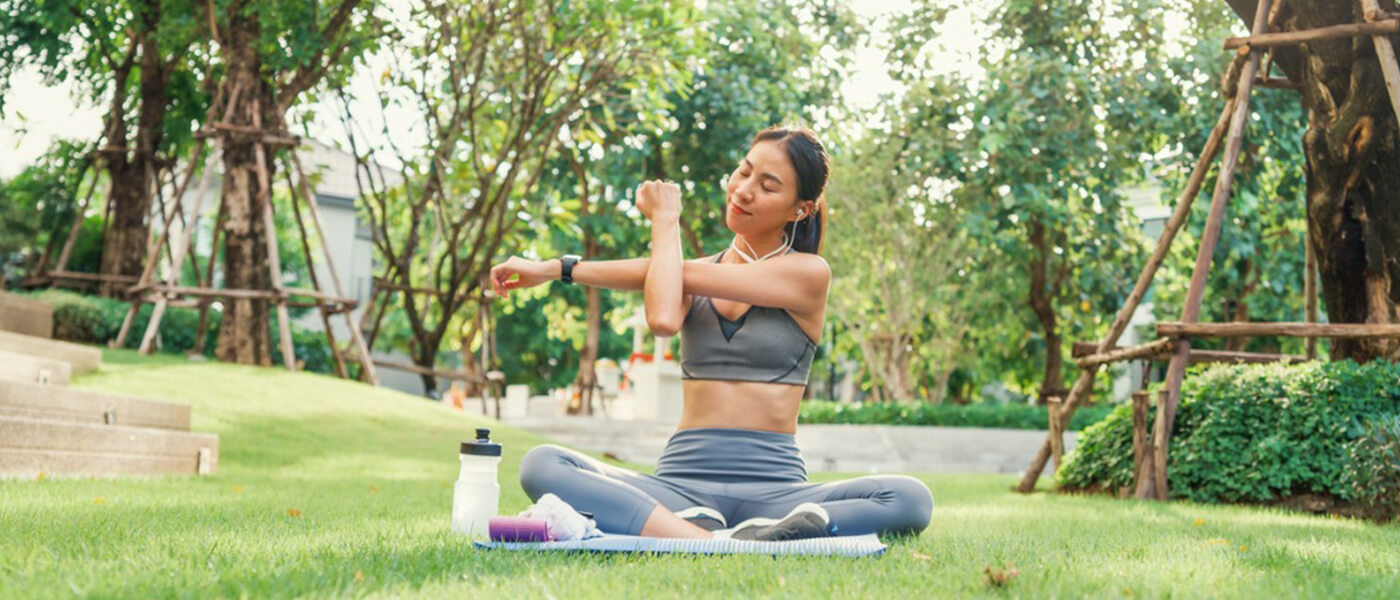
As fast fashion continues gaining popularity, textile waste is a growing concern, especially when an astounding equivalent of one garbage truck full of clothes is being burned or dumped every second. The fashion industry alone contributes to 10% of global carbon emissions and 20% of the world’s water pollution. The common materials found in our clothes and unsustainable production methods adopted by most fashion brands pollute and harm our oceans and the biodiversity that depends on their habitats to survive.
With Singapore’s growing awareness towards climate change and the impact of fast fashion on the environment has spurred the growth of homegrown brands who want to do things differently. These eco-friendly brands have found their own ways to minimise the use of plastic at either end of the product life cycle, all in the name of protecting the rich biodiversity on land and under the sea.
By supporting apparel brands that prioritise sustainability, we can help to protect our diverse ecosystem and its animal inhabitants. Let’s have a look at three such local apparel brands whose pursuit for slow fashion is making waves for nature.

1. Flow Funkie Studios
Every time we wash our clothes, tiny microfibres are shed from the fabric and released into our waterways, entering our oceans and seas. Because of their tiny size, these microplastics can be consumed by marine animals, with disastrous consequences for the species and the entire marine ecosystem.
At Flow Funkie Studios, they believe in slow fashion and mindful manufacturing, by creating high quality and timeless activewear intended to last a lifetime. To disrupt the cycle of textile waste and pollution, their apparel are made from certified Global Recycle Standard (GRS) fabric, using up to 77% of recycled materials in their fabric contents.
Through the operation and production of their activewear, they follow the chemical requirements in the GRS guidelines, ensuring that only non-hazardous chemicals are used in the production process and that chemicals are disposed of properly.
While it is not possible to completely eliminate the shedding of microfibres from washing our clothes, they do what they can to lessen the impact. Every order you make comes with a polyamide ‘Baby Steps’ wash bag. The wash bag catches microfibres from all your clothes during wash, minimising the microplastics that enter the wastewater system, and protecting marine life.
With Flow Funkie Studios, we can all take small steps toward reducing microplastic pollution and protecting our oceans without cramping on our style. To support their movement, you can visit their website or Instagram.

2. Anothersole
On average, Singaporeans use 1.76 billion pieces of single-use plastic items every year, which often end up in landfills where they take over 1,000 years to decompose, this results in the release of harmful chemicals into the environment.
Shoes are among the products that are manufactured using a lot of plastic. Different types of plastics are sewn, glued, and pieced together, oftentimes making them difficult to recycle. Facing such a challenge, local footwear brand Anothersole is taking active steps to redefine footwear production.
Anothersole is dedicated to making a positive impact by producing shoes made from earth-friendly materials, eliminating the use of virgin plastic, and focuses on creating quality footwear that lasts. Their ergonomic footbeds are made from bio-based EVA, containing 20% castor bean oil, making them both environmentally and foot-friendly.
Through sustainable production, Anothersole also turns discarded plastics like water bottles into beautiful, lasting handbags. As discarded plastics often end up in the sea, the non-biodegradables become pollutants and choking hazards for marine life, including fish, gulls, and sea turtles. Taking the initiative to repurpose unwanted materials into functional accessories proves that waste can eventually be removed from our biomes to be turned into something wonderful.
If you would like to learn more about how Anothersole is committed toupcycle waste materials into fashion items, you can visit their website or Instagram.

3. SUI
Unsustainable farbic production practices such as excessive water use, deforestation and the usage of agrochemicals and dyes can cause soil degradation and chemical pollution, — all of which disrupt natural food chains and contribute to biodiversity loss. To meet the ever-growing demand for apparel, these things may seem like a small price to pay. SUI, however, takes a different approach to fashion, prioritising the environment and people.
All of SUI’s clothes are made with sustainably-produced fabric, using GOTS-certified organic cotton, hemp, and eco-friendly blends. With the goal of becoming a zero-waste brand, SUI saves every bit of leftover fabric and produces their clothes on a made-to-order basis to reduce waste.
To protect our natural ecosystems, 90% of all their garments are herbal dyed, using dyes formed from natural ingredients, and for the remaining 10%, they use azo-free dyes that are not harmful or polluting to the planet.
If you would like to learn more about how you can be a part of the change, you can visit their website and Instagram.
How Else Can We Contribute To Our Biodiversity?
Much like these businesses, we also hopes to inspire change through our initiatives. We wish to showcase how all these changes can create a collective impact on the natural biodiversity and environment that we all share, and safeguard a sustainable future for our future generations.
Through conscious choice to our daily routines — like switching to sustainable clothing, or using a laundry wash bag — we can all do our part for the environment and the biodiversity we share it with. Join us in support for native biodiversity conservation efforts and pledging to protect these biomes for a greener future.
If you still have red packets collected during Chinese New Year on hand, you can also recycle them through our #GreenForProsperity initiative. Simply visit any one of our Used Red Packet Recycling Bins across 30 retail and office locations around the country, and drop off your used or excess red packets there!
These red packets will be collected and brought to Tay Paper Recycling where they will be repurposed into new products. Our recycling bins are available until 31 March, and you can find the nearest location via www.geneco.sg/greenforprosperity.
Put your knowledge to the test in our Geneco Facebook or Instagram giveaway now and you could be one of the 10 lucky winners to walk away with a $30 eCapitaVoucher and a Geneco Green Starter Kit! Simply answer this question: “Name one impact microfibres have on the environment.” Contest ends 28 February 2023, T&Cs apply.
Together, let’s Power The Change and choose #GreenForProsperity.
Not just for us. But for generations to come.
References:
- Elangovan, N. (2020, June 5) Singapore households generated additional 1,334 tonnes of plastic waste during circuit breaker: Study, Today Online.
https://www.todayonline.com/singapore/singapore-households-generated-additional-1334-tonnes-plastic-waste-during-circuit-breaker
Image Credits: Nylon Coffee Roasters
Source: The Sustainability Project
Living in harmony with Singapore’s nature and wildlife
- Home
- Residential
- Blog
- Archive by Category "Knowledge" (
- Page 3 )
[Post Date]
Living in harmony with Singapore’s nature and wildlife
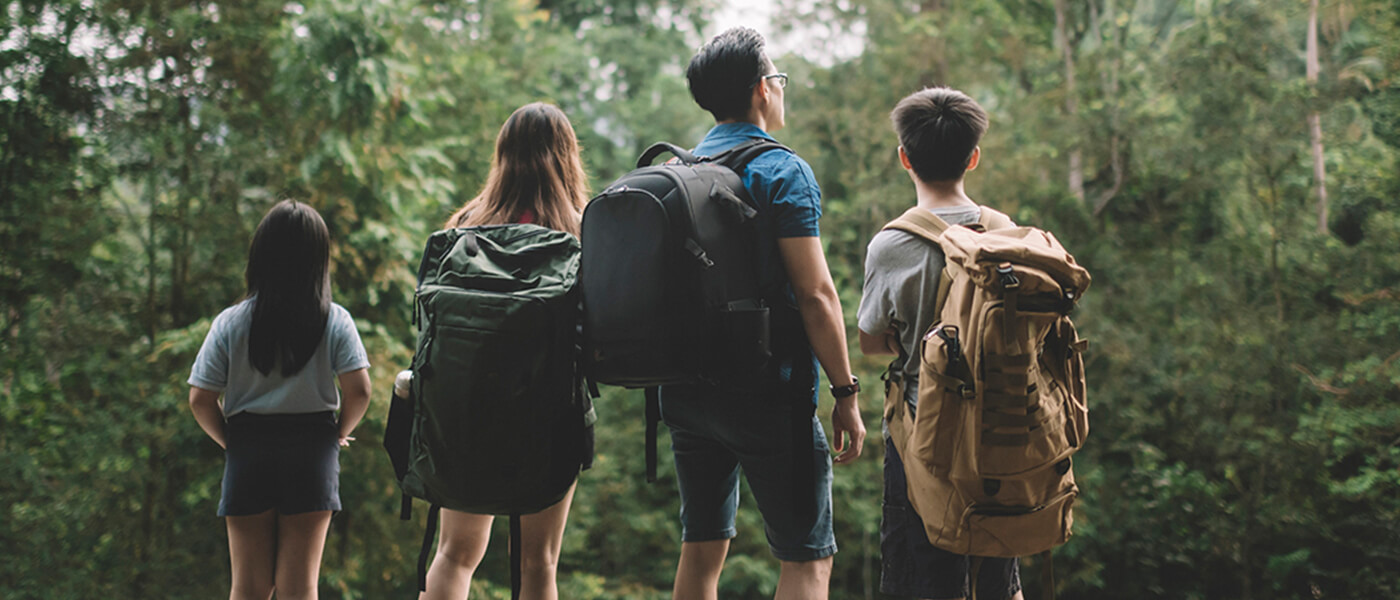
With mangroves fringing our shores, sunlit parks along the city and gardens atop our housing estates, we are fortunate to have the abundance and accessibility of green spaces all around us, and right in front of us. Besides enjoying cleaner and cooler air, spending more time in nature can help us to reduce our stress levels and improve our health and wellbeing.
Amidst our hectic lives, how do we best reconnect with nature, while doing our part to protect our lush greenery and biodiversity? Here are 3 organisations that can help us understand how we can appreciate and safely coexist with the wildlife and green spaces in our city, as we transform into a City in Nature.
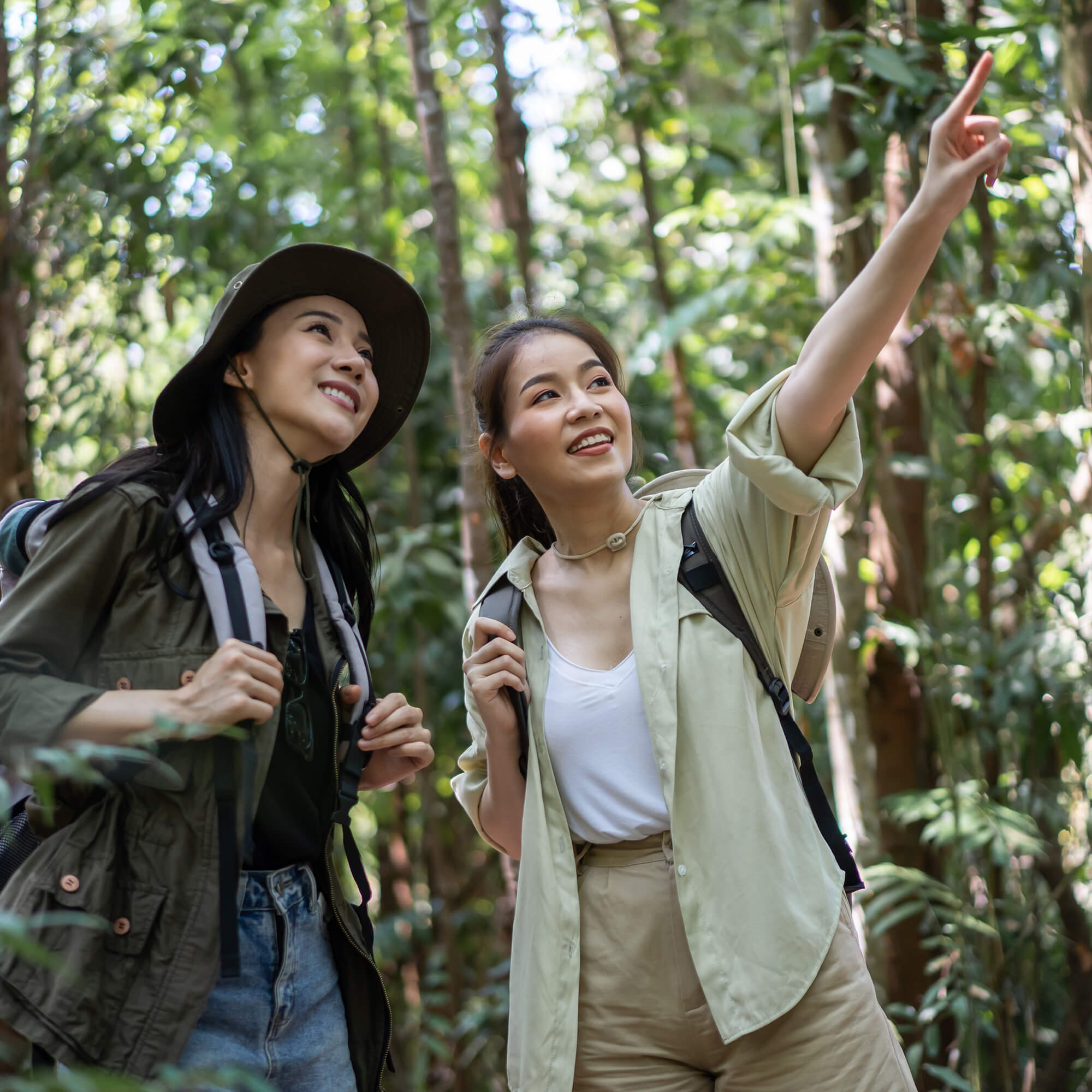
1. Understanding and fostering positive relationships with our wildlife
As a home to large varieties of native wildlife, encounters with wild animals, such as wild boars and otters, in our everyday urban landscape have become increasingly common. Singapore is currently one of the greenest cities in the world, with estimates of more than 390 species of birds and 2,100 native vascular plants – transforming into a true City in Nature.
Living close to nature comes with many benefits, but it also comes with important responsibilities – because it means that we encounter wildlife more frequently. If you’ve ever spotted a wild animal and were unsure about what you should do, can do, or should be aware of, you should check out Our Wild Neighbours (OWN).
Our Wild Neighbours (OWN)
Every month, the Urban Wildlife Working Group (UWG) receives an average of 2500 calls from the public about wild animals, and it became apparent over time that there was a lack of understanding and preparedness for Singapore’s native wildlife in the country. With the continued thriving of our local terrains, the UWG started the OWN initiative to promote coexistence with our native wildlife.
OWN aims to bridge the gap in understanding between members of the public and the wild, empowering members of the public with wildlife etiquette knowledge, and educating them about ongoing rescue, rehabilitation, and release efforts. The OWN website is a one-stop platform for best practices on what you can do when you see wildlife, how you can prevent unpleasant interactions, and who you can call for help if you spot a wildlife in need. The campaign focuses on key species of wildlife found in Singapore: koels, bats, civets, macaques, monitor lizards, crocodiles, otters, snakes, wild boars, and pangolins!
If you are interested to learn more about the variety of native wildlife in Singapore, you can check out their website.
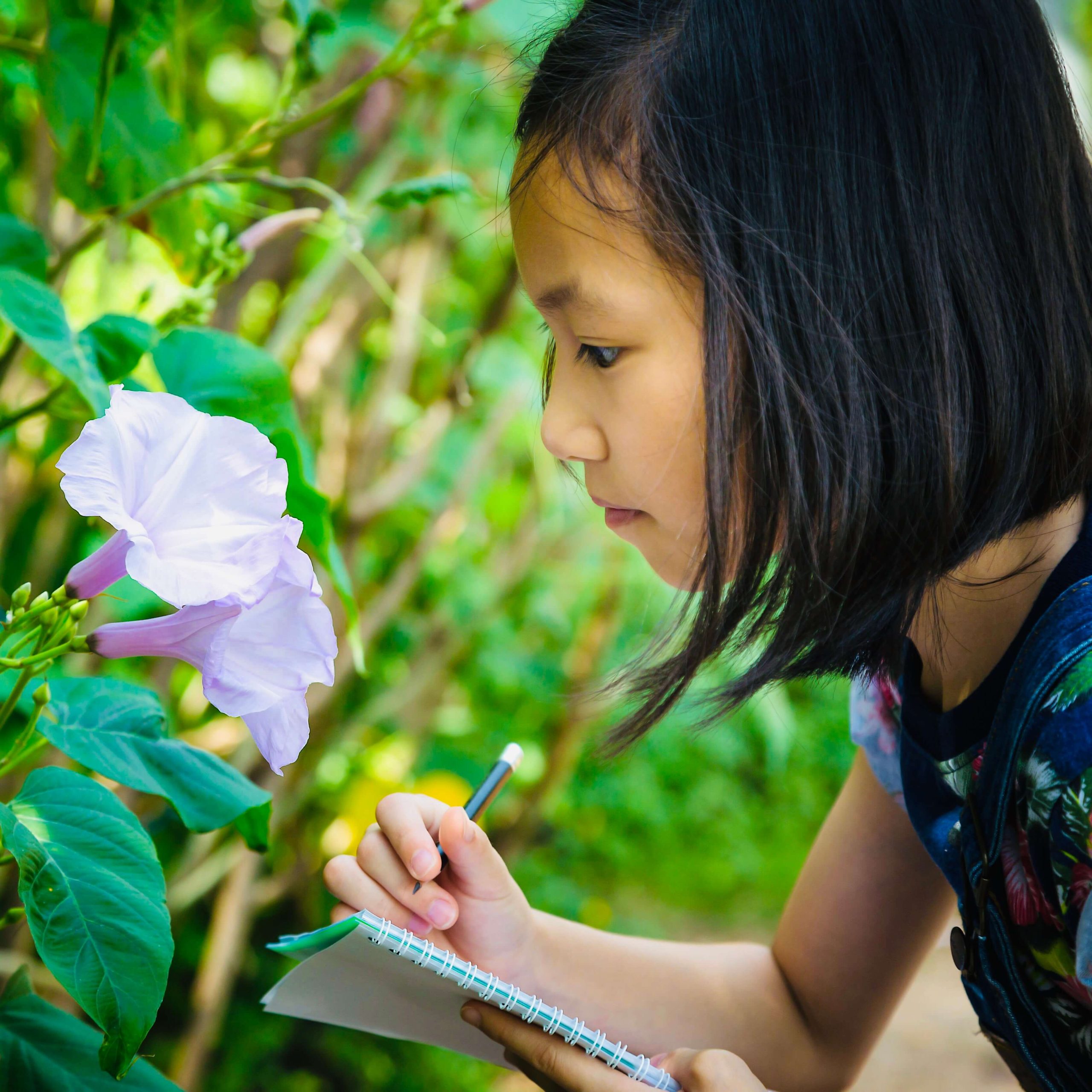
2. Growing a love for nature from young
When it comes to building a relationship with nature, it is a good idea to start positive practices and understanding from young. Research suggests that nature-based learning and education improves a child’s academic performance and builds critical thinking skills. On top of that, spending time in nature makes room for a healthy exposure to Vitamin D, and reduces anxiety and stress levels in children.
Though cultivating an appreciation for nature takes time, we encourage starting small with Roots & Boots.
Roots & Boots
Inspired by the forest school pedagogy originating from Scandinavia, Roots & Boots takes a unique approach to education by encouraging nature exploration and play in children as part of their growth and education from the early years.
Through a holistic approach, children can solidify their academic and social-emotional growth through their interactions and enhance their appreciation for nature, environmental education, and STEAM learning (science, technology, engineering, art, and mathematics). The outdoor learning environment also strengthens the bond between our little ones and the natural environment around them.
There are a variety of one-off enrichment programmes available outside of the school curriculum such as the Nature Explorers and the Young Adventurers programme. These programmes are created to provide a safe space for children to explore and learn from their encounters, and nurture their appreciation for the environment.
Nature Explorers
Parent-accompanied and suitable for children 2 years and younger, the Nature Explorers programme provides limitless opportunities for young children to experience and encounter the outdoors using sensory and language-rich guidance.
The Young Adventurers
Young adventurers from 3 to 10 years old can also have a go at independent play in nature. Whether rain or shine, these sessions are designed to include a great deal of discovery and adventure at various outdoor locations in Singapore. This will provide Young Adventurers with opportunities for inquiry, experimentation, reflection, and play as they get acquainted with the outdoors.
If you’re interested in signing your little ones up for a new adventure, you can find more information on Roots & Boots’ website and Instagram page.
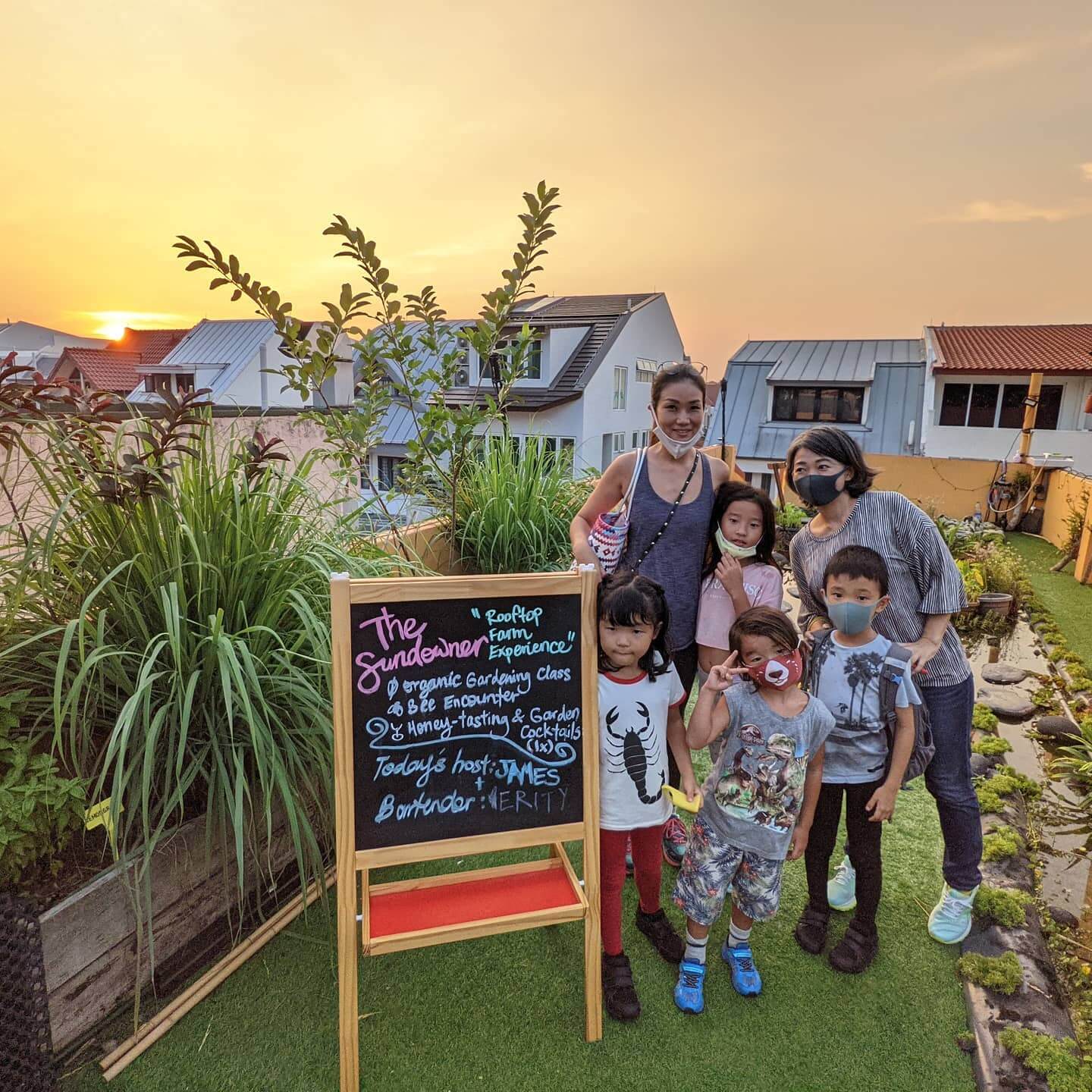
3. Unwinding in nature atop an iconic 1960s shophouse
Whether it’s for the young or old, it’s always exciting to find nature where you least expect it. If you’re looking for an urban oasis to disconnect from the city life and get in touch with nature, you will be happy to find The Sundowner.
The Sundowner
When Clarence Chua, founder of The Sundowner, first chanced upon the empty concrete rooftop in 2020, he knew it would be just the spot for travel-starved souls in Singapore to find the perfect escape. The Sundowner sits atop the bustling cafes and bars of the Siglap restaurant belt in a shophouse roof. The unique vision for the space stemmed from the idea of having a ‘sundowner’ at the end of the day – a practice in the safari where one enjoys a drink at the end of the day while watching the sunset. It is a nature-based social space for like-minded lovers of nature and tranquillity to mingle and unwind.
On top of that, The Sundowner also organises a range of experiences such as nature-based workshops, lifestyle activities, and other farm encounters for people of all ages to participate in. One of their most popular rooftop farm experiences is the Bee Encounter. You get to don a bee suit and enjoy a closeup encounter with bees, where you will get to inspect a beehive and observe them harvesting nectar from around the farm. Every nest in their apiary is a rescue, so you will also be supporting local ecology. This 1.5 hour interactive farm experience is perfect for kids and young families, to get them away from the computer screens and interacting with nature.
If you would like to check out the various workshops and private experiences they are organising, head over to their website and Instagram page.
Inspire a more sustainable home with #GreenForProsperity
This Chinese New Year, we have kicked off our #GreenForProsperity initiative, to inspire Singaporeans to look deeper into our green spaces and contribute to the conservation of our native biodiversity, so that we can build a sustainable home for our future.
Choose #GreenForProsperity with us this year by joining us to pledge your support of biodiversity conservation efforts! We will be donating $10,000 to the biodiversity conservation and research efforts by National Parks Board’s registered charity and IPC, Garden City Fund, but we need your help – pledge to show your support here and we will donate on your behalf.
We’re also excited to bring back our inaugural Used Red Packet Recycling Bins initiative after last year’s successful collection and recycling of 1,040kg of red packets.
From now till 31 March, simply drop off your used or excess red packets at any of the 30 Used Red Packet Recycling Bins at our partners’ locations – CRU, IUIGA, Refash, OTO, and Wisma Atria – island-wide. These red packets will then be pulped by Tay Paper Recycling and made into paper products.
And while you’re doing good for the environment, share with us which Used Red Packet Recycling Bin location you will be dropping off your red packets at on our Instagram or Facebook posts to stand a chance to win $28 worth of eCapitaVouchers!
As we look towards embarking on a greener journey this year, we hope that you will be inspired to support and protect our biodiversity and green spaces for a brighter and more sustainable tomorrow.
Together, let’s Power The Change and choose #GreenForProsperity.
Not just for us. But for generations to come.
In the spirit of giving back to the community and environment
- Home
- Residential
- Blog
- Archive by Category "Knowledge" (
- Page 3 )
[Post Date]
In the spirit of giving back to the community and environment

While we are in the spirit of giving towards our loved ones this holiday season, let’s take a moment to reflect on how we can give back to our communities and the environment as well.
Other than setting aside time and money to volunteer and donate to great causes, there are also plenty of daily activities that provide us with opportunities to make a difference. These little actions that we take each day can collectively create a positive impact towards societal and even environmental change.
For instance, we can make more eco-conscious choices when it comes to the brands that we shop from. Over the years, there have been many small, sustainability-focused businesses emerging and we can do our part as consumers to support them. If you are wondering where to start, here are three local businesses that have been setting great examples when it comes to contributing to the local communities as well as the environment.

1. Upcycle & Recycle Fashion To Restore Our Environment
The prevalence of fast fashion has made it a key contributor to overspilling landfills. At least every 1,000 Singaporeans purchase an average of 34 pieces of new clothing and discard half of their previously owned clothing each year.
However, there are ways for us to manage our wardrobes to improve the environment and social impact by recycling and upcycling our fashion items instead. Not only are these practices cost-friendly, they also curb the pollution and carbon emissions caused by overproduction of apparels.
If you’re interested in finding new uses for your old pieces, simply look to Greensquare Textile Recycling.
Greensquare Textile Recycling
Primarily a textile collection channel, the local business currently operates 15 donation bins nationwide, taking in any form of textile, including clothes, bedsheets and shoes to be recycled.
Items that can be reused are first identified and segregated, followed by recyclable fabrics that are redistributed to textile importers in developing countries so that the less fortunate are able to purchase clothes at a more affordable price.
Currently, the folks Greensquare aims to double the percentage of recycled textile and leather waste from 7% to 14% by 2030. They are focusing on closing this gap by promoting awareness of the 3Rs (Reduce, Reuse, Recycle) through education, with a focus on engaging youths in schools. Their recycling efforts are also complemented by upcycling workshops, where in-house experts will guide you on how to transform an old T-shirt into a stylish tote carrying your daily necessities.
By donating at the nearest collection point, or registering for an upcoming workshop, you, too, can contribute towards their cause of protecting the environment.
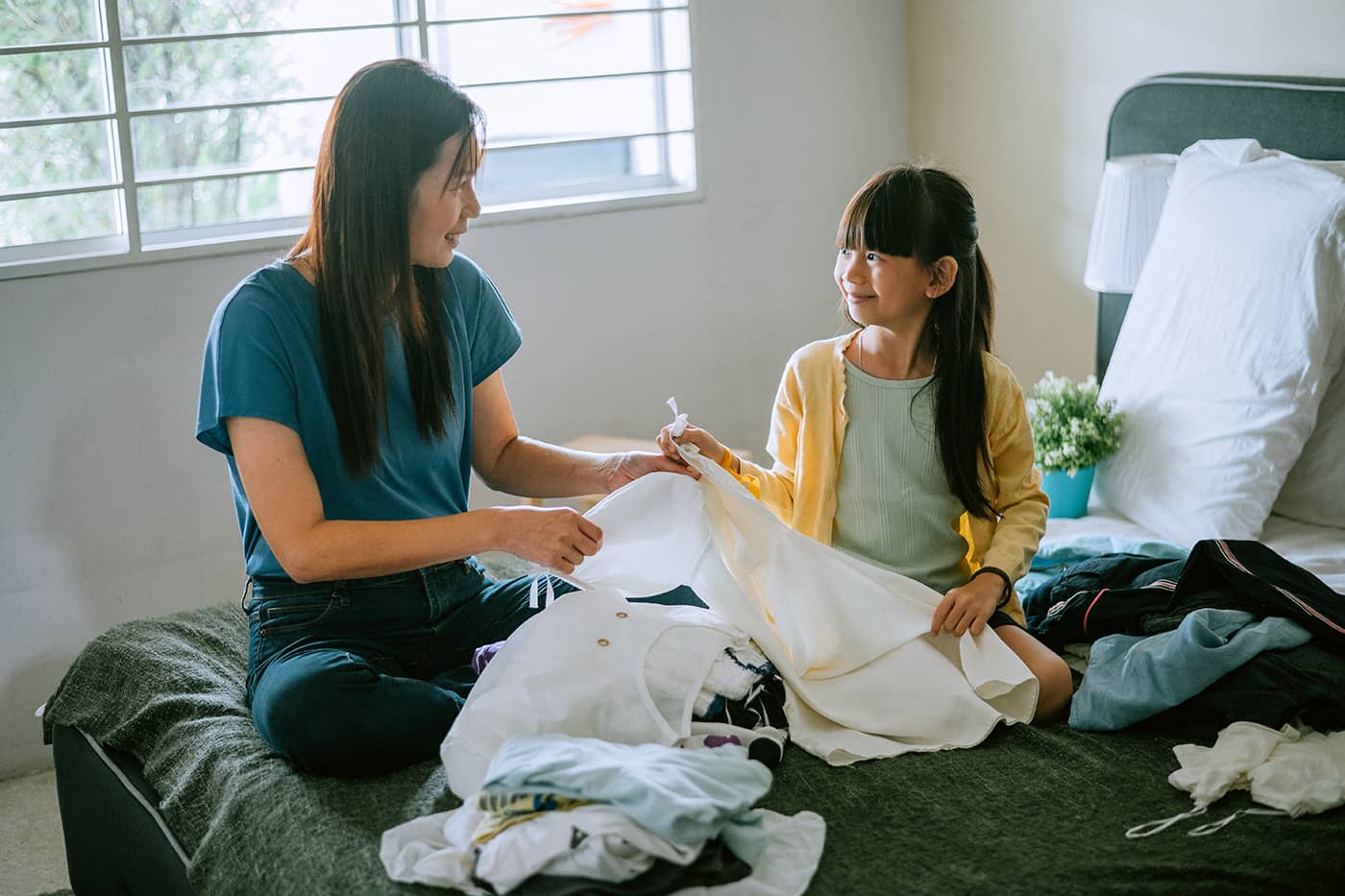
2. Trying Out A Plant-Based Lifestyle
According to a study published by the UN’s Food & Agricultural Organization, beef and dairy production account for almost 60% of greenhouse gas emissions that contribute to global warming. By swapping meat for plant-based alternatives, even one meal at a time, we can play a part in restoring the balance between all the available resources for food. Not to mention, we could also potentially be curbing harmful livestock practices.
Though going plant-based is rarely an overnight transformation, we encourage starting small with plant-based snacks by local provider BoxGreen.
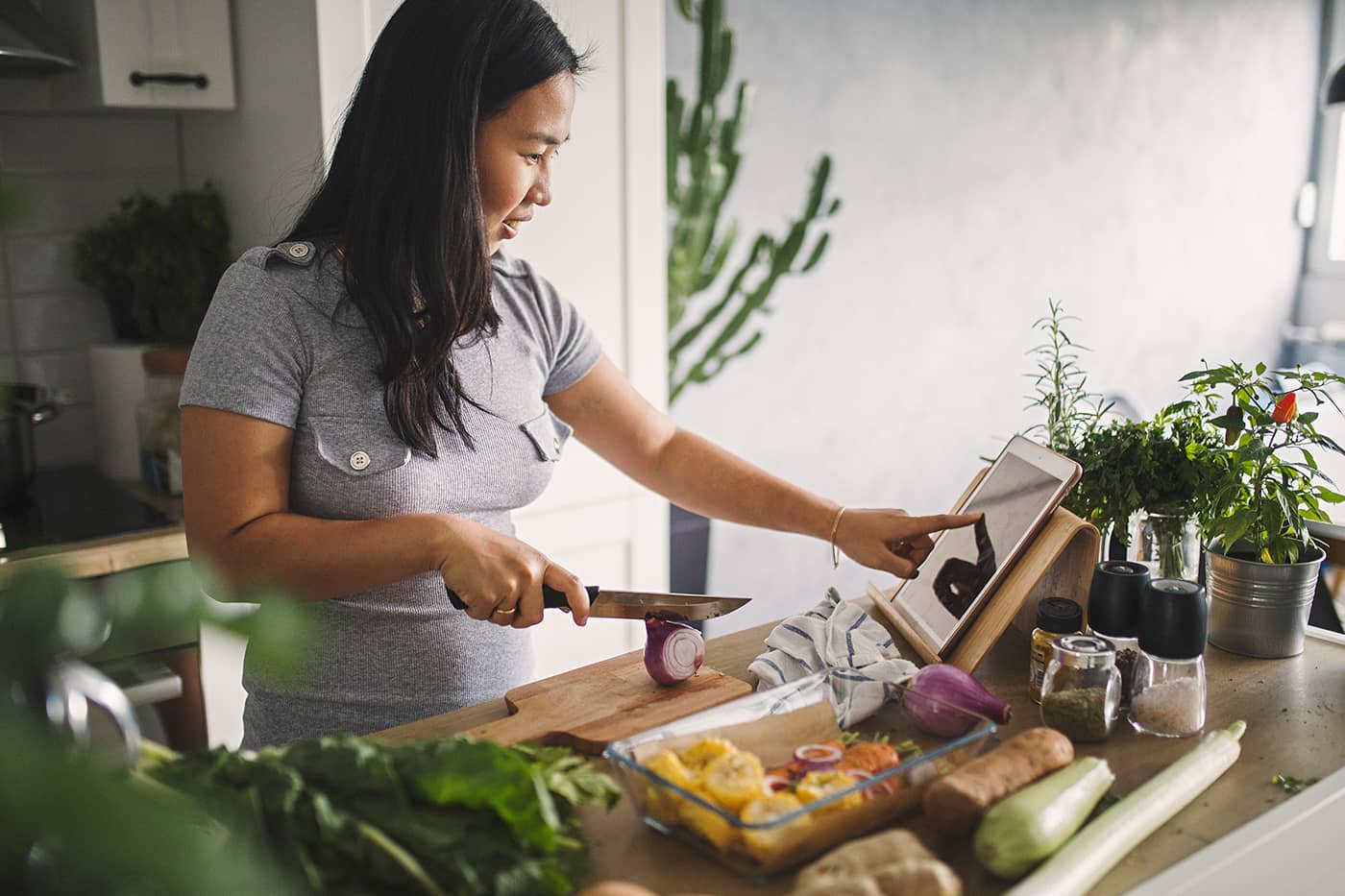
BoxGreen Co.
Founded by plant-based buddies Andrew and Walter, BoxGreen is a B-corp-certified snack maker, passionate about treats that are both nutritious and eco-friendly. Strong in their belief that healthy snacking can be just as tasty, the two set out on an experimental journey to discover various flavours, ingredients and textures to make snack time an indulgent yet guilt-free experience.
Their eco-conscious ethos extends to all facets of their business. For instance, individual snack packaging is made entirely from recyclable materials, and they’re working towards incorporating a plastic-free policy across their operations.
While BoxGreen’s delicious snacks encourage plant-based adoption for a healthier environment, it’s also worth mentioning their do-good initiatives that contribute to a better society. For instance, the brand works with Yellow Ribbon Project to offer training and upskilling opportunities to inmates by employing them to pack snack boxes in prison.
Through community empowerment, BoxGreen shows the power of extending kindness and empathy so that anyone, regardless of background, can be a force of good for society.
Read more about BoxGreen’s sustainability story, or head straight to their online store to order vegan treats.
3. Choose Eco-Brands Over Mainstream Products
While off-the-shelf goods have the benefit of being accessible to all, not many consumers are aware of the environmental costs that come with mass production.
Eco-friendly brands are generally more transparent with their processes, exercising more quality control to ensure sustainable methods result in low-waste products that customers can wholeheartedly enjoy.
Coffee, for example, is a common sight in many households. By choosing to buy brands like Bettr Coffee Company, our frequent purchases can help contribute to their mission of building a healthier environment.

Bettr Coffee Company
Since its founding in 2011, the team have taken their passion for coffee to create a community of eco-conscious partners, customers and beneficiaries with their range of specialty coffee products.
Their best-sellers include zero-waste coffee capsules and sustainably-sourced beans that cater to retail and wholesale buyers all over the region. Even with international fans, they still maintain carbon-neutral deliveries to support a cleaner environment all around.
Their on-ground operations are just as planet-friendly with the use of recyclable materials and biodegradable serveware in retail bars, workshops and corporate events.
A purchase with Bettr Coffee Company goes towards social initiatives that give back to less privileged communities, such as the vocational programmes and micro-enterprise opportunities that the brand runs for marginalised women and youth-at-risk.
You can find success stories from their Instagram, and give your support to this homegrown business the next time you need to restock your coffee supply.
Giving & Making A Difference
Much like these businesses, Geneco is also adopting our own way to enact the spirit of giving through this festive period. We know that every act of kindness can make a life-changing difference to the planet and its people, and contribute towards safeguarding a future that sees a happily ever after for many generations to come.
In the season of gifting, Geneco presents #HappilyEverAfter campaign and co-created an exclusive children’s e-book, ‘The Little Green Heroes’ with 3Pumpkins, a socially engaged non-profit that engages less privileged youths in art projects, as part of our fundraising initiative.
This lovely children’s story revolves around René, Ria, and Rhys, a group of three good friends with special powers, who always took good care of their Planet Erf. However, a giant Trash Monster appeared and wrecked havoc on Planet Erf. How would René, Ria, and Rhys rise to the challenge and protect what they love?
Through this collaboration, we invite you to spread the festive joy by donating to the #HappilyEverAfter Fundraising initiative that will help to contribute to their purpose and Power The Change for these children.
You can download the complimentary e-book here or listen to the read-aloud version by Kelly Latimer.
We are also giving away $50 worth of FairPrice e-vouchers and an exclusive Geneco Green Starter Kit to 10 lucky winners over on our Facebook and Instagram pages! All you have to do is to answer this: “Name one of the featured sustainable organisations mentioned in our latest article,” and follow the rest of the steps in the post to stand a chance in the giveaway. Contest runs from 30 November 2022 to 14 December 2022.
Together, let’s Power The Change for good and share our happiness with one another.
Youths in action — advocating sustainable living their way
- Home
- Residential
- Blog
- Archive by Category "Knowledge" (
- Page 3 )
[Post Date]
Youths in action — advocating sustainable living their way
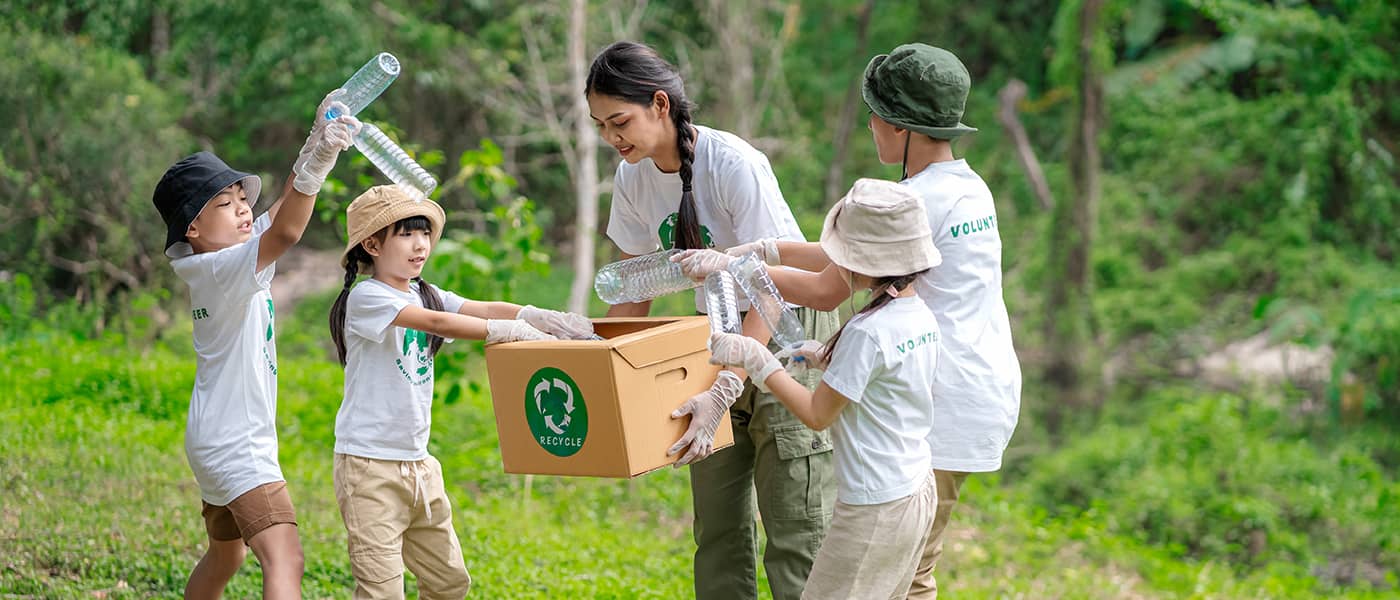
In recent years, we are heartened to see the rise of many youths taking charge to help build a greener future for themselves with meaningful eco-initiatives and purposeful green businesses. Whether it is an individual or creating communities, they are set to empower everyone to take part in their mission for a more sustainable nation. Let’s take a look at the noble efforts of these young advocates as they passionately devote themselves to bringing all of us closer to their common green vision.
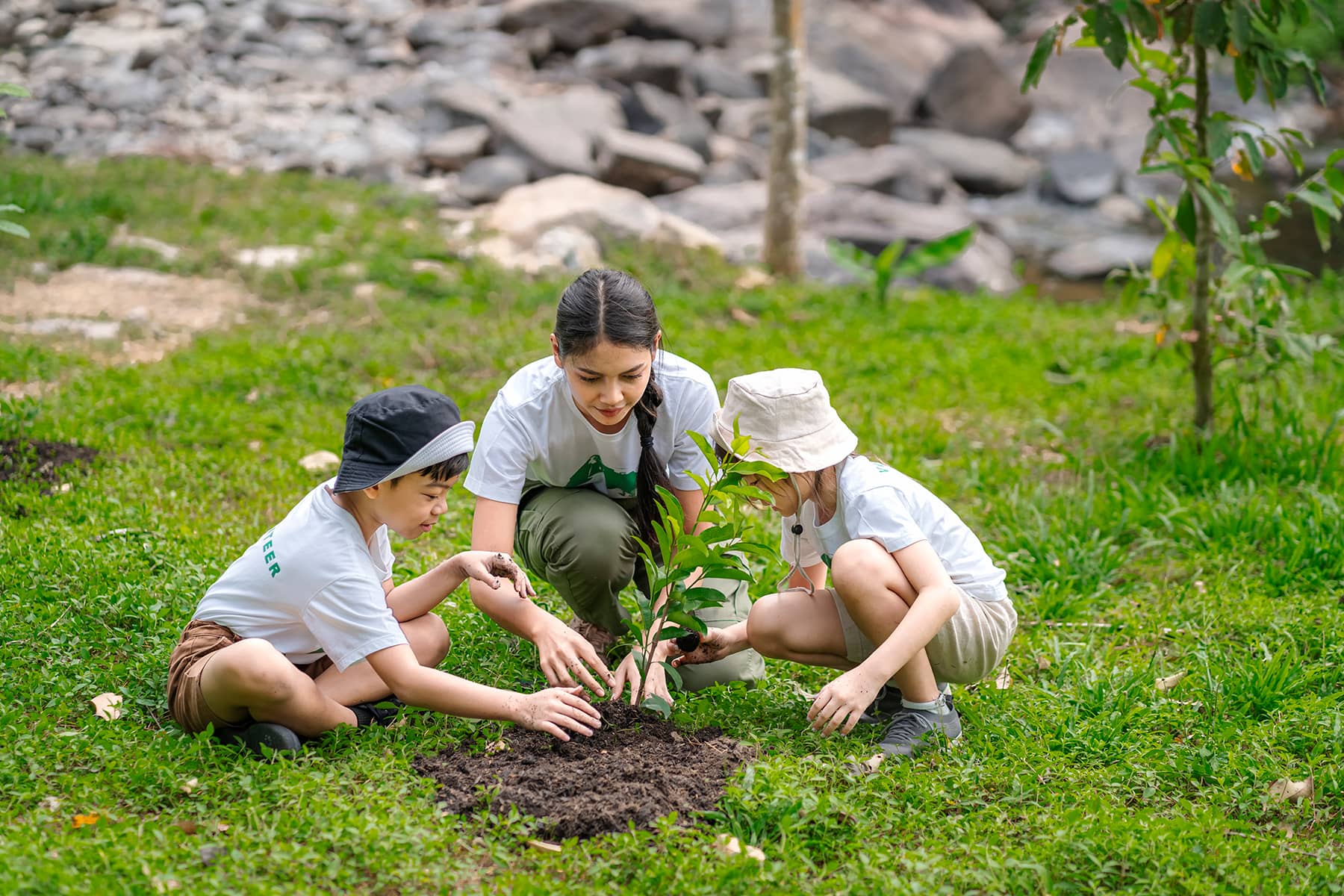
1. Taking small steps towards sustainable living
Embracing a sustainable lifestyle is something that needs time to develop and sometimes research needs to be done, which can also be time-consuming for those who just started to embark on their eco-journey. If you’re on the lookout for ways to introduce small steps to build a better planet, The Sustainability Project opens its doors to you with its one-stop platform!
The Sustainability Project
Jo, also known as Joline Tang, is the founder of The Sustainability Project (TSP). She has been an environmental advocate since her polytechnic days. From lecture notes to metal cans, she would find various opportunities to recycle them. During her university days, she had the opportunity to travel to Norway for a university exchange program. This trip gave her the courage to start TSP and since then, she has only one goal in mind for TSP – ‘Sustainable Living Made Easy’.
At TSP, Jo breaks down hard and difficult topics into smaller actionable workshops, talks, activities and donation drives for the public to take part in. One such activity is Zero Waste Packaging Initiative, where they collect used packaging and repurpose them into other packaging.
Apart from selling sustainable items on their online shop, TSP also offers sustainable business consultation services to other small business owners.
If you are looking for a place to kickstart this exciting initiative, you can join the TSP volunteer program! Various volunteer positions, such as writer, workshops, social media, and others are available. Or do visit TSP on Instagram to find out more!
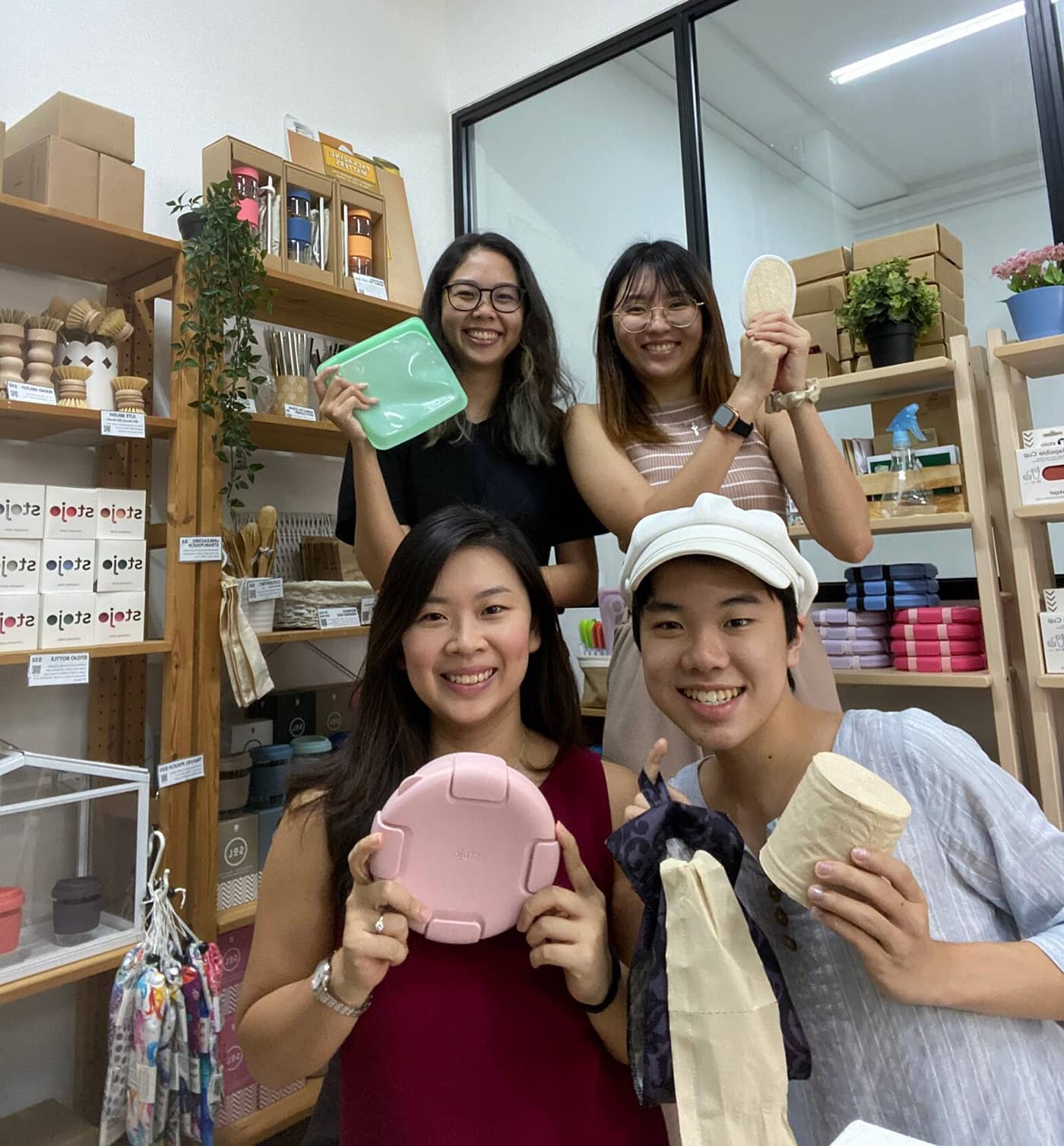
Source: The Sustainability Project
2. Educating the public through fun, bite-sized graphics
Illustrated stories or comics could be a great way to get youths interested in environmental awareness. Youths have always been enamoured by colourful, easy-to-understand stories and relatable mascots. That’s how climate activist Woo Qi Yun chartered her course of environmental studies through a unique style of doodling on social media.
The Weird and Wild & Climate Cheesecake
To capture the hearts of today’s youths, Qi Yun started The Weird and Wild, a creative platform that focuses on communicating environmental awareness through technology and design. Her creations made sustainability simple, accessible, fun and digestible.
Through her self-taught talent – doodling, Qi Yun regularly updates her creations on her website and Instagram. She covers hard topics about irregular local hot weather conditions, climate action, wildlife preservation, rising sea water and climate reports. She has also created an adorable frog-like mascot to tell stories on various environmental messages in her own unique ways.
Together with a group of young environment enthusiasts, Qi Yun has also made a collective effort to kickstart a podcast programme named The Climate Cheesecake Podcast. It is a weekly Spotify series that “breaks down heavy climate topics — just like cheesecake!”. The half-hour-long episodes are entertaining, casual and insightful and together with the charismatic hosts; Rachel, Sankar and Movin, they provide refreshing perspectives on sustainability and environmental issues in each episode.
In one of their recent episodes, “Last Time My Kampung Have”, The Climate Cheesecake Podcast talks about the loss of forest biodiversity to our rising demand for resources and explores alternatives to ensure a more responsible consumer lifestyle.
If you are interested to hear more about this group of young advocates, follow The Climate Cheesecake Podcast on Spotify or Climate Cheesecake on Instagram. You can also get the latest updates of Qi Yun, The Weird and Wild on Instagram!

3. Connecting with nature through art
‘Art is often magical’ – this clearly illustrates how Singapore-based artist and writer Dorcas, works her magic to create powerful art to share her own message of sustainability. Through her unique creation, Dorcas expresses the deep connection she has towards people, wildlife, plant life, and the planet we all live on. Dorcas uses art on her own website and Instagram as a medium to advocate various environmental and social issues that happen both locally and worldwide.
Nature Art Classes For the Young
“I don’t know if this will change anything, but I know it’s the right thing to do” – This sentence is often mentioned by Dorcas. She hopes to put her vision of the world into creative practice, and continue to guide and teach everyone to create an impact the world needs.
Dorcas teaches two forms of art classes. In Intertidal relics classes, her students will get to experience how to create basic shapes, understanding colour theory and textures and illustrating any character of their own choice. Whereas in the ‘Earth Painting’ classes, she teaches students to create art pieces with soil so that the students will get to experience using natural materials and be more connected to the motherland.
Don’t miss these unique classes by looking out for their next session here. If you also find Dorcas’s unique are helpful, do support her on her website or follow her on Instagram.
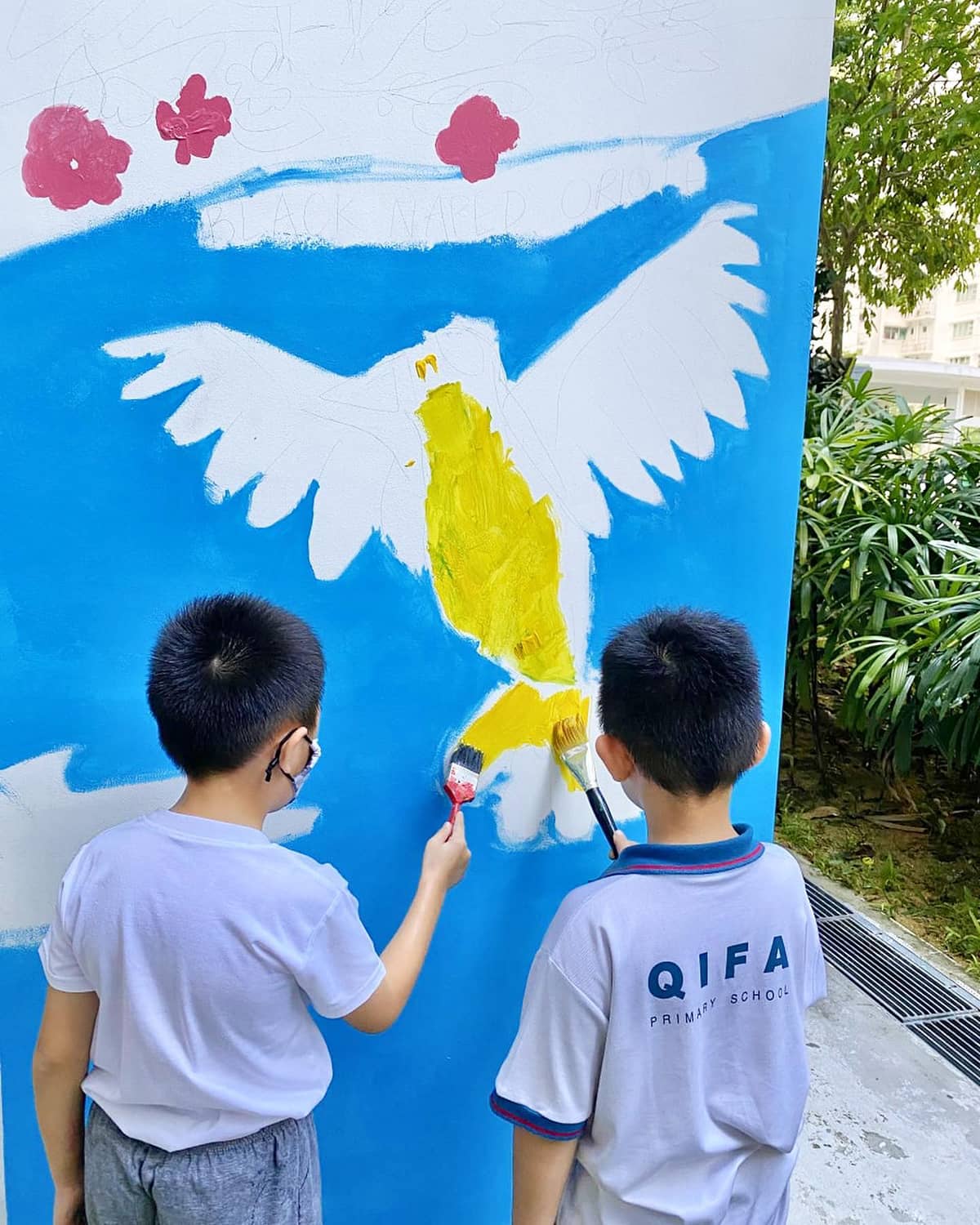
Source: @earthtodorcas
Generation restoration is a new era where youths come together to create green initiatives for the environment. Just like how Jo, Qin Yun and Dorcas have created a movement of their own, it is heartwarming to see them continuously using various new ways to advocate for the causes they believe in.
To build a greener environment for everyone, climate restoration is a collective effort for everyone. Let’s be inspired by the youths of tomorrow and continue to contribute through our daily green efforts.
Together we can #PowerTheChange and build a greener world for the next generation.
Here’s how you can take steps to tackle climate change
- Home
- Residential
- Blog
- Archive by Category "Knowledge" (
- Page 3 )
[Post Date]
Here’s how you can take steps to tackle climate change
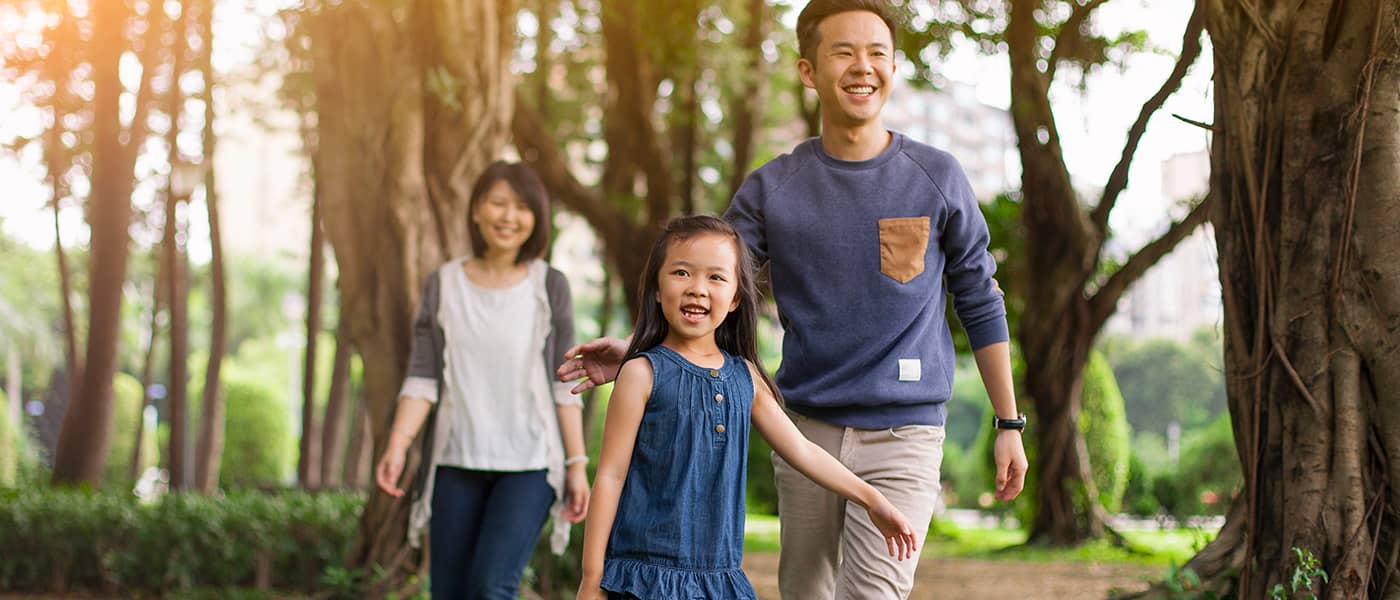
The conversation on climate change has been more prevalent over the years. It’s heartwarming to see more individuals and communities taking positive steps for our planet, and we hope you can come onboard with us on this green lifestyle journey.
To ease you into adopting a more sustainable way of living, we spotlight some of our homegrown eco-advocates who seek to guide you towards a greener tomorrow. Each of them has taken great strides in spreading awareness for a more eco-friendly way of life. From early environmental education for children and a climate focused discussion platform for youth to recyclable initiatives for adults – there is something for everyone.
Let’s find out more about some of the programmes and activities from these groups that can help empower you and your family to take a more proactive role towards a greener nation!
1. Join green activities organised by eco-advocates
Spark your appreciation for our natural biodiversity with Cicada Tree Eco-Place, a non-profit, non-governmental organisation, which was co-founded in 2006 by a group of five Singaporeans. Supported by volunteer educators, conservationists, environmentalists, eco-artists and wildlife activists, the group was formed in an urgent response to the climate change crisis and its impact on wildlife and humans.
Cicada Tree pushes for climate action through their three-pillar mission: Providing affordable and quality environmental education for all; conserving and protecting Singapore’s natural heritage by raising awareness of both local and regional flora and fauna; and encouraging individuals and organisations to adopt an eco-lifestyle.
You can also take an active role and join in Cicada Tree’s wide variety of outreach activities, including nature walks, workshops, camps, and experiential learning in the outdoors.
If you want to get more involved in their cause, check out Cicada Tree’s calendar for upcoming charities, fundraisers, and seminars that you can participate in!
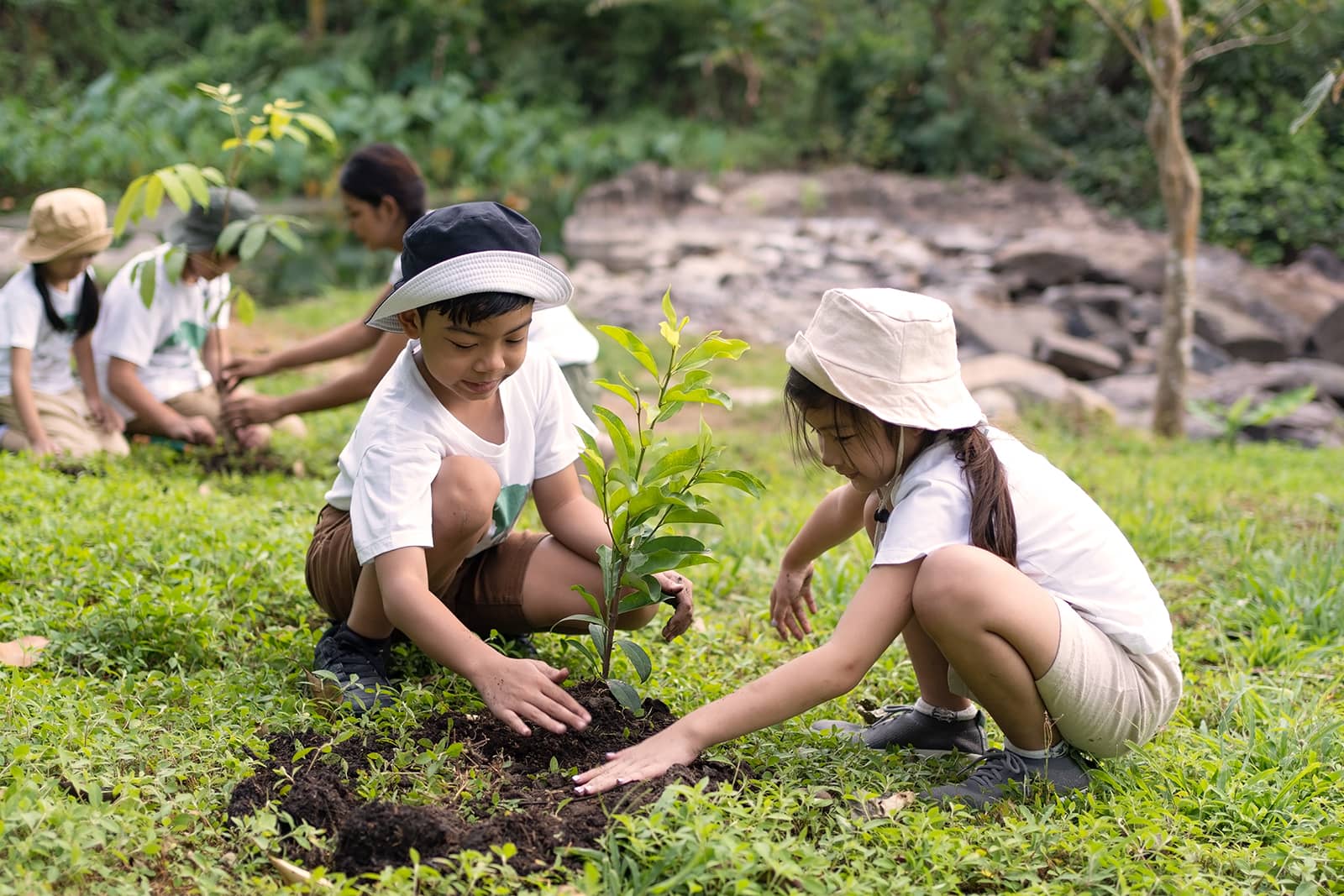
2. Lend an active voice to climate change policies
The Singapore Youth for Climate Change (SYCA) has been leading the conversation to meaningfully engage our youths in the ongoing discussion about environment and climate policies. Co-founded by a group of youths, SYCA’s goal is to provide a platform for Singaporean youths to engage in topics related to sustainable development and various climate awareness initiatives.
At present, SYCA represents Singapore in the United Nations Climate Change Conference, Conference of Parties (COP) to work with other nations on how to keep the earth healthy. In the local sphere, the group also works with schools to teach our future generations how to live sustainably to protect and preserve a greener tomorrow.
You can be part of the active conversation by joining SYCA. They are running a five-part workshop called “Keeping Up With Climate Policy” which opens the floor for you to pinpoint specific areas for our nation to further advance our climate policies — and you can join in for their second instalment! SYCA also welcomes volunteers to help plan or lead some of the environmental projects.
If you have the passion to drive some of these environmental initiatives, get in touch with them on Telegram or follow them on Instagram @syclimateaction to receive regular updates.
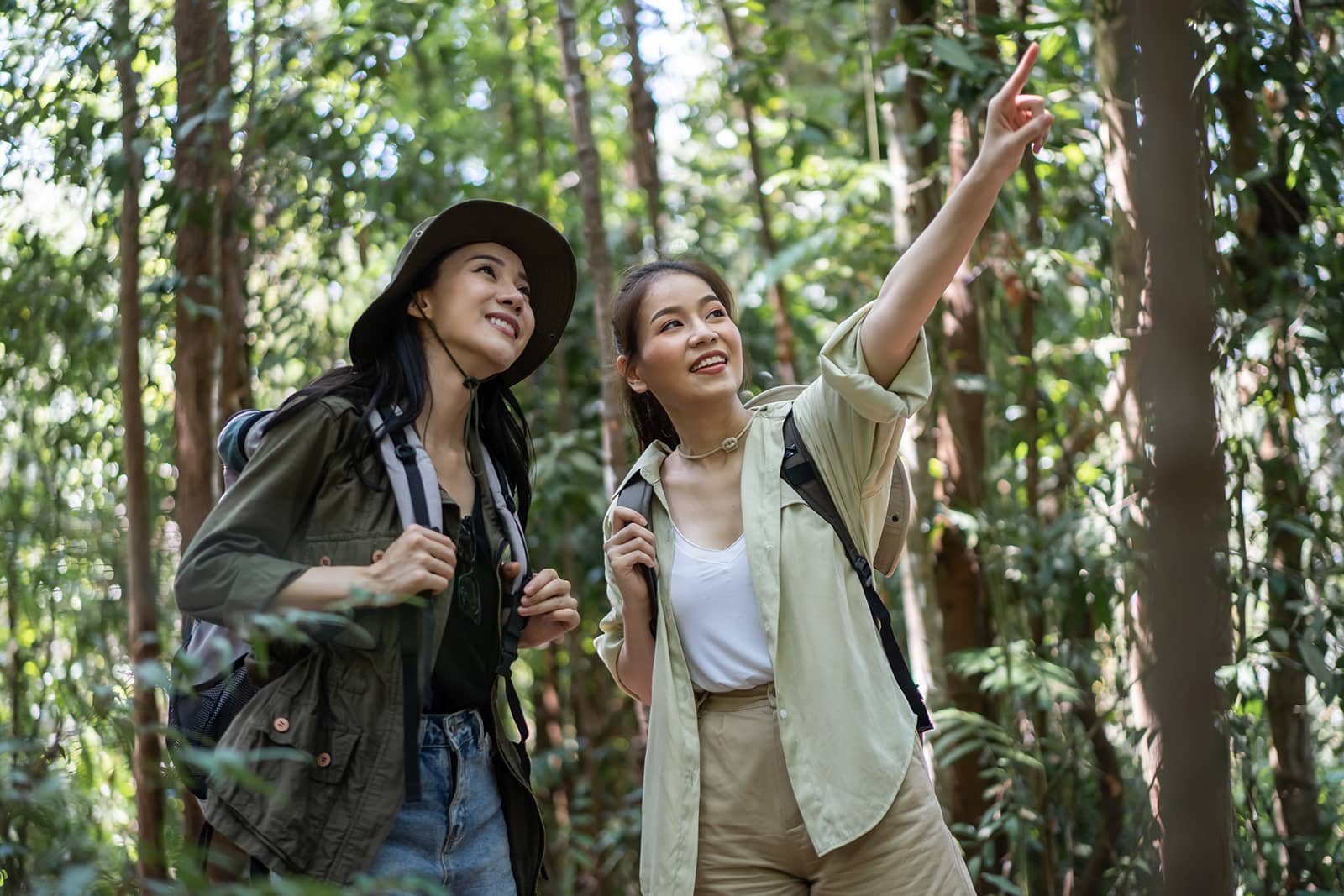
Source: The Sustainability Project
3. Impart eco-friendly knowledge to the next generation
The first step to establishing a more conscious eco-friendly lifestyle is always easier when you start from young.
Earth School focuses exclusively on environmental education for the young and pre-teens. Run by a team of passionate youth environmentalists who believe in the power of environmental education to create change for our future, the school brings together our local environmental community from eco-organisations to fellow environmentalists to share their knowledge and expertise to motivate and ease the younger generation into environmentally-conscious individuals.
If you’re looking for a versatile classroom environment that can break down complex environmental issues into digestible, hands-on lessons for your children, Earth School has you and your kids covered. Enrol your young ones to be part of the solution and help equip future generations with the knowledge needed to reduce climate change.
You can also check in on their event calendar to find environmental exhibitions and films like Waves of Change at the Singapore ArtScience Museum, or give back to the community in voluntary initiatives like their beach cleanups.
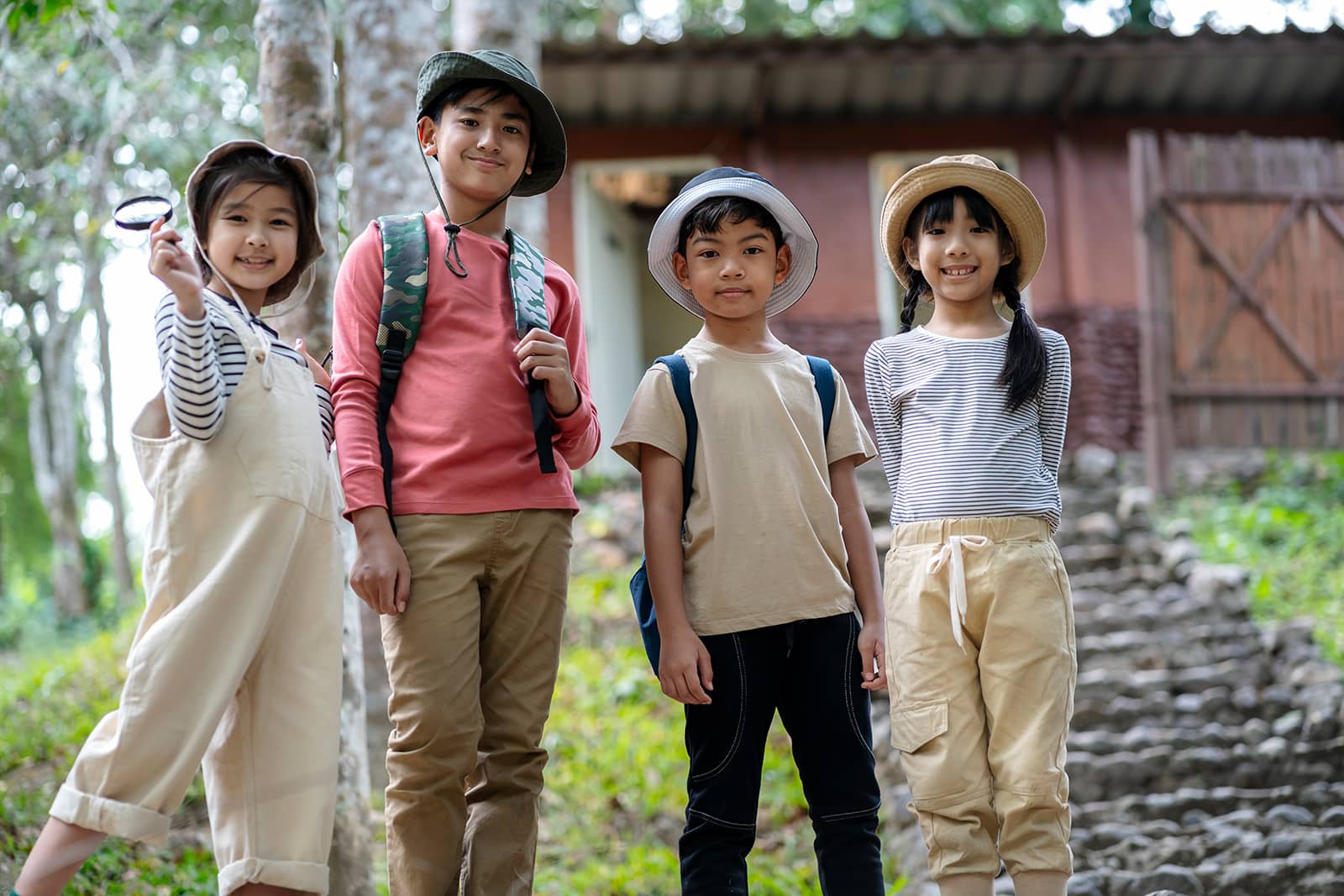
4. Reduce your carbon footprint with less plastic
Take a moment to think of how much plastic we use each day; every form of disposable packaging we have ever used when we opened or bought something new. Making the active decision to turn away from environmentally damaging plastic is the behaviour that Plastic-Lite wants to help you encourage such as bringing your own tingkat containers for your lunches, or shopping for groceries with your own tote bag.
Plastic-Lite is a grassroots volunteer community that was formed in 2016 to inspire Singaporeans to cut down on plastics; essentially a Plastic-Lite lifestyle.
They educate the community on many fronts including visiting eateries and supermarkets to encourage the public to go light on straw usage and reducing plastic bag use. Plastic-Lite also hosts workshops in schools and at corporate seminars to spread the word about sustainability and adopting a plastic-lite lifestyle!
One of Plastic-Lite’s most successful initiatives is Bounce Bags, a bag-sharing programme where anyone can donate reusable bags at the kiosk located within Our Tampines Hub, B1 outside NTUC Fairprice or Heartbeat@Bedok.
Alternatively, you can also visit their website, “Let’s Talk Climate” to learn more about environmental issues happening worldwide.
Singapore’s efforts against climate change
As we all might know, Singapore has been continuously taking steps to contribute to climate action. The OneMillionTrees Movement by NParks is a key initiative to achieve our Singapore Green Plan 2030 and Geneco has been supporting the movement by being part of the Garden City Fund’s Plant-A-Tree programme with the commitment of planting 250 trees over 5 years since 2021.
This World Ozone Day, also known as the International Day for the Preservation of the Ozone Layer on 16 September, we planted an additional 150 trees in Pasir Ris Park to celebrate the announcement on Geneco being Singapore’s Number 1 Residential Electricity Retailer.
Now, let’s put your knowledge to the test in our Geneco Facebook or Instagram contest now and you could be one of the 10 lucky winners to walk away with a $50 FairPrice e-voucher and an exclusive Geneco Green Starter Kit!
Simply comment with your answer to this question on either of the social media platforms: Name one of the local organisations mentioned in our blog that can empower you in the journey against climate change.
You too, can be part of the climate change solution by taking part in the initiatives we have mentioned in the blog.
Let’s continue to #PowerTheChange and take steps to tackle climate change for a greener future.
3 Lesser-known facts about Singapore’s “Garden City” vision
- Home
- Residential
- Blog
- Archive by Category "Knowledge" (
- Page 3 )
[Post Date]
3 Lesser-known facts about Singapore’s “Garden City” vision
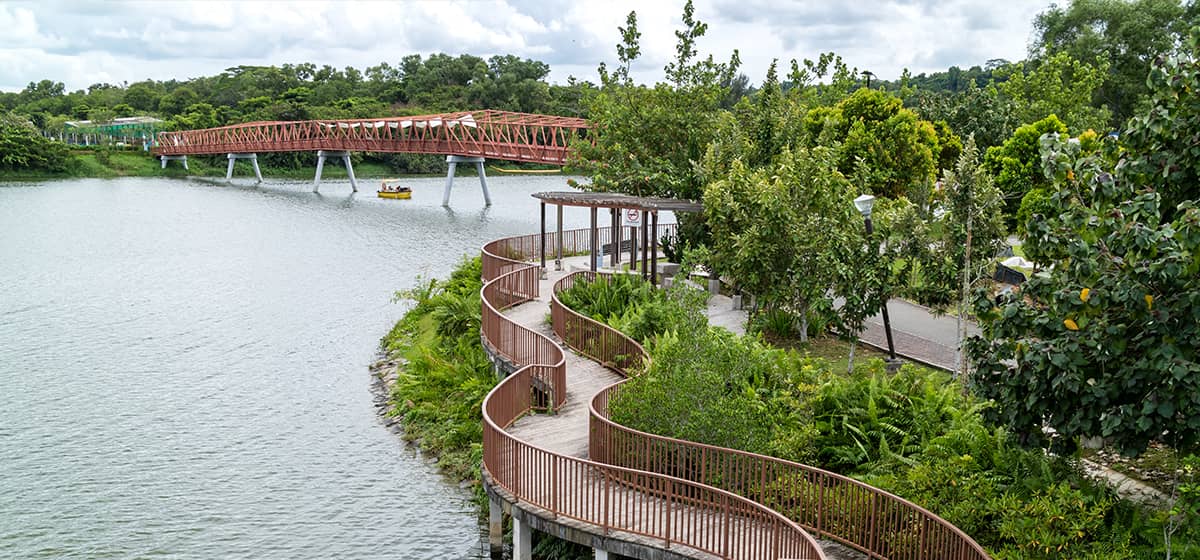
As one of the greenest cities in the world, Singapore is often known as the “Garden City” – a unique urban city with plenty of greenery from shores to streets.
Much of this commitment to developing green spaces stemmed from the famous Garden City Movement – the brainchild of Singapore’s late founding father Mr. Lee Kuan Yew during the early days of independence.
How did Singapore grew to become the lush urban city it is today? Here are 3 lesser-known facts behind Singapore’s Garden City movement that you may not have known:
Fact #1 – The roots of the Garden City Vision can be traced back to pre-independence
While many may have thought that Singapore’s Garden City initiative started during the post-independence nation-building days, did you know that in fact, it started two years before independence in 1963? Mr. Lee Kuan Yew, the then-Prime Minister of Singapore, launched the first Tree-Planting campaign in Clementi and even planted the first tree himself – a Pink Mempat, known for its beautiful cherry blossom-like flowers. Anchored by the belief that an “urban jungle of concrete destroys the human spirit”, he set out with the mission to fill the country with an abundance of greenery to lift the spirits of Singaporeans.
Post-independence, Mr. Lee then unveiled the Garden City Vision in 1967 to continue Singapore’s transformation into an island of lush greenery. The initial phase was characterised by an active tree-planting programme, with the number of trees increasing from 158,600 in 1974 to 1.4 million in 2014.
On top of these efforts, Mr. Lee also introduced an annual Tree Planting Day on the first Sunday of every November to continuously beautify Singapore and maintain the green spaces of our cityscape. This practice has continued to endure to this very day and has even been expanded by our National Parks Board (NParks) as one of the key initiatives in the Singapore Green Plan 2030, the OneMillionTrees Movement, which aims to plant one million trees across the island by 2030.
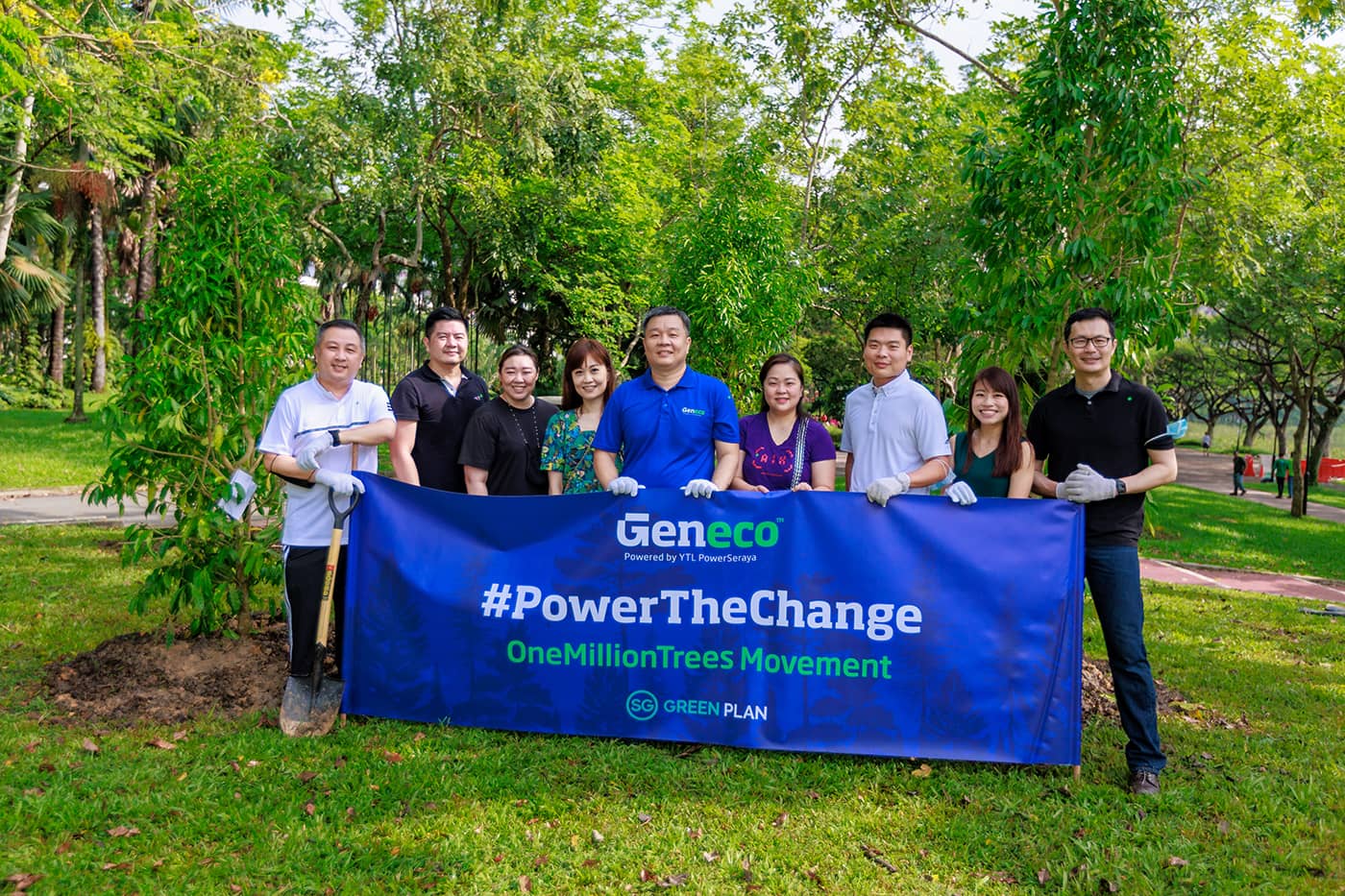
Geneco is proud to be part of NParks’ OneMillionTrees Movement, with our commitment to plant 250 trees over five years. This year, we are also pledging to plant an additional 150 trees on World Ozone Day (16 September) as part of our Geneco x Garden City Fund fundraising initiative on Giving.sg. Join us as we raise funds for this movement, and we will be matching your contribution dollar-for-dollar with 100% of the money raised to go towards this initiative!
Fact #2 – Growing the green spaces around us meant building more than 300 parks!
In the 1970s, Singapore sought to expand our green spaces beyond planting trees around our infrastructure. An additional focus was added to the Garden City Movement and includes cleaning up our streets and developing parks to allow Singaporeans to get in touch with nature or simply spend time in nature with their family.

Source: The Sustainability Project
Besides serving as recreational spaces, these parks were also the “green lungs” nestled amongst our city environment, providing clean, fresh air for everyone. From 1975 to 2014, the number of parks in Singapore increased from 13 to 330, greatly expanding the green spaces around our homes and workplaces. As Singapore grew the green spaces around existing infrastructure, green corridors and park connectors were also developed, linking the various parks to form continuous green spaces.
In addition, nature reserves were set up to serve as safe havens for flora and fauna while allowing Singaporeans to enjoy our rich natural heritage. In recent years, the return of otters to our waters and exotic migratory birds are a testament to how far we have come as a city living in harmony with nature.
With the announcement of the Singapore Green Plan 2030, one of the key focus is to continue to nurture a City in Nature. This includes doubling the annual tree planting rate and adding 1000 hectares of green spaces by 2035, which will contribute significantly to creating a green, liveable and sustainable home for Singaporeans.
Fact #3 – We started growing our green spaces up since 2008
Because of land scarcity and an increasing population, there were challenges to continue growing the green spaces through parks and trees on the ground. Singapore decided that the solution was to look up! With a notable shift towards biophilia, our city began to incorporate sky-rise greenery into the design of our buildings.
In 2008, Green Buildings were made mandatory where all new developments must include flora, in the form of green roofs, cascading gardens, and verdant walls. The Pinnacle@Duxton, the tallest public housing development in the world, connects all seven 50-storey buildings with gardens on the 26th and 50th floors, allowing residents to draw close to nature even when high above the ground.
Our iconic supertrees at Gardens by the Bay also demonstrate the synergy between technology and nature. 18 supertrees varying from 25 to 50 meters in height act as cooling ducts for nearby conservatories, and collect rainwater. 11 of them also have solar photovoltaic systems to convert sunlight into energy.
Another example of this synergy is the CapitaSpring – one of the tallest buildings in the Central Business District (CBD) in Singapore. Standing at 51-storey high and 280 metres tall, this visually striking biophilic skyscraper is home to more than 80,000 plants from over 130 species, of which, more than 63 per cent are native plants. Best of all, the public can access these green features, including the Green Oasis, a mid-air botanical promenade, which spirals from Levels 17 to 20 and is home to over 38,000 plants from 70 species.
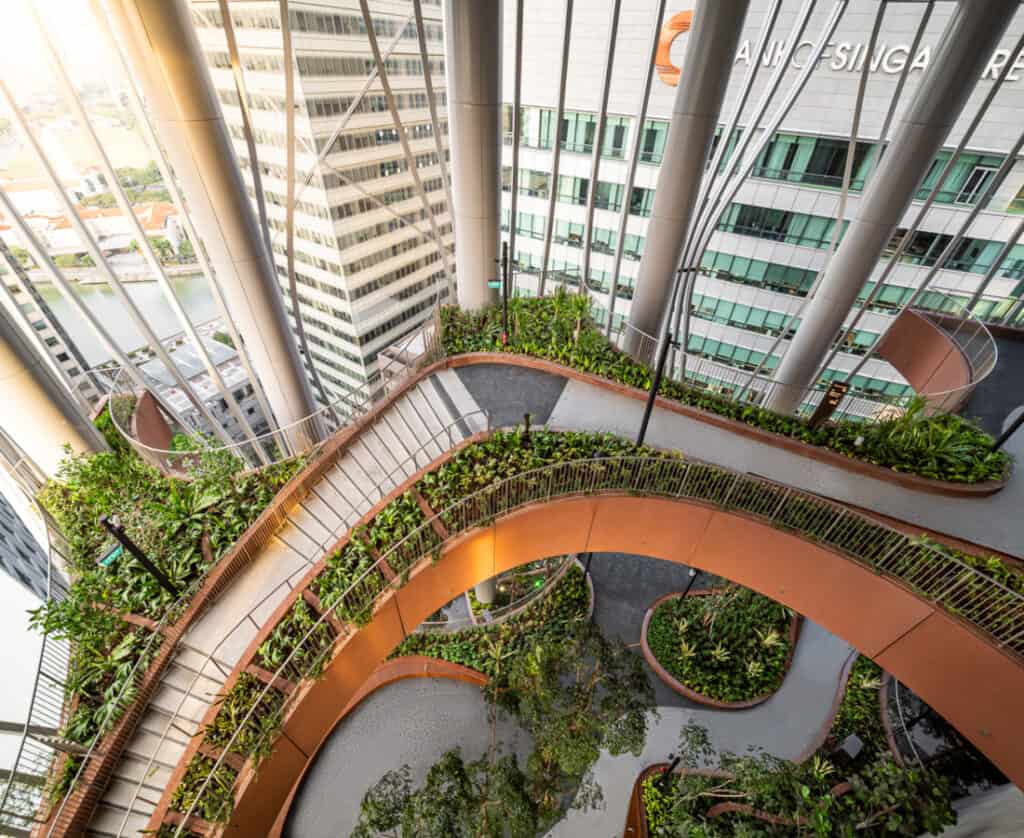
And there you have it, 3 lesser-known facts about Singapore’s “Garden City” Vision. Singapore has indeed flourished as a Green City because of these eco-conscious key initiatives that are rolled out with clear stewardship. To ensure a greener Singapore for our future generations, our job is far from done. Let’s continue to inculcate a go green mindset, one that involves making small changes in our daily lives and cultivating an appreciation for the beautiful greenery surrounding us. It is only by adopting a conscious awareness of a sustainable lifestyle that will ensure our City in Nature will thrive for many generations to come.
Now that you are empowered with the 3 facts of Singapore’s “Garden City” Vision, head over to our Geneco Facebook page or Instagram account where we are currently hosting a contest giveaway! Simply answer this question “What year was the Garden City Vision unveiled by Mr. Lee Kuan Yew?” and you could be one of the 10 lucky winners to walk away with a $50 FairPrice e-voucher and an exclusive Geneco Green Starter Kit!
Let’s continue to #PowerTheChange and build a sustainable Singapore together.
Because green is more than a colour.
It is our future.
Make a difference this Plastic Free July with these local brands
- Home
- Residential
- Blog
- Archive by Category "Knowledge" (
- Page 3 )
[Post Date]
Make a difference this Plastic Free July with these local brands

Did you know? For a small city like Singapore, we use a whooping amount of plastic – 1.76 billion annually to be exact. This is unsurprising given the prevalence of single-use plastics in our everyday lives, which include items such as plastic bags, PET bottles and takeaway plastic containers.
The consequences of such plastic waste are far-reaching. According to the Organisation for Economic Cooperation and Development (OECD), it is estimated that a garbage truck’s worth of plastic is dumped into the oceans every minute, killing marine life and even ending up in our meals as microplastics.
Plastic Free July is a timely reminder that each of us can be part of the solution by making a conscious choice. As Singapore continues to take steps towards a greener future, many brands across our island are offering incentives for customers who bring their own reusable bags or containers when dapaoing food or having coffee on-the-go. At these local brands, you may even get some discounts! Read on to find out more:
1. Nylon Coffee Roasters
Since its establishment in 2012, Nylon Coffee Roasters has been anchored on the belief of building sustainable, traceable and transparent relationships across its coffee chain. Located in a quaint spot at the heart of Singapore, the brand serves delightful cups of coffee from beans sourced from the origin and lovingly roasted daily in-house.
In addition to its sustainable sourcing practices, Nylon also prides itself in its day-to-day eco-friendly movement, particularly by reducing single-use coffee cups. By bringing along your own reusable tumblers when purchasing your takeaway coffee, you can get to enjoy 30 cents off your cup of joe! Fret not if you do not own a cute coffee mug yet – Nylon is well-stocked with mugs of various designs, including this colourful mug that we really love! With its double wall vacuum insulation, your coffee will be kept at the right temperature as you sip it throughout your morning meetings.

Image Credits: Nylon Coffee Roasters
What’s more, as part of its eco ethos, Nylon also offers used coffee grounds should you be looking for some enriching nutrients for composting endeavours. Preloved coffee jute bags are available in-store too upon request if you’re looking for them for any of your upcycling projects. Psst, these sturdy bags are perfect for any beach clean-up activities you have in mind as well – a great alternative to plastic garbage bags!
2. Bettr Coffee Bar
For the coffee connoisseurs amongst us, you definitely have to check out Bettr Coffee Company, a homegrown coffee company that offers professional coffee education and speciality coffee products. With two retail bars located at the Ministry of Social & Family Development and Khoo Teck Puat Hospital, the brand serves sustainably sourced coffee to the community with each coffee bar largely staffed by certified students and graduates to allow them to gain skills and experience. With every purchase from these coffee bars, it also goes towards supporting Bettr Coffee’s social programme for marginalised women and youth at risk.

Source: The Sustainability Project
And it doesn’t stop there! Committed to igniting change to the environment, Bettr Coffee also has several initiatives in place to reduce the brand’s carbon footprint. These include going straw-free and giving 30 cents off drinks for customers who bring their own reusable cups in the effort to reduce plastic waste! With every KeepCup purchased from Bettr, you can also look forward to being rewarded with a free drink.
Going a step further, Bettr also repurposes its used coffee grounds by upcycling them to give these food waste a new lease of life! These coffee grounds have been successfully upcycled into coffee-based tables in partnership with A1 Environment, and also turned into compost at Khoo Teck Puat Hospitals’ rooftop farm – now that’s the mark of a true circular economy!
3. Back to Basic Living
Experience the slow life and bring your picnic mats along when you dine at Back2Basic Micro Vegan Restaurant. Located along a wide grass patch at Buona Vista, Back2Basic offers the option for customers to immerse themselves in nature while enjoying delicious food and basking under the warmth of the sun. The restaurant features a comprehensive menu, which includes organic coffee, organic vegan desserts and even food for your fur kids – there’s something for everyone!
If you’re considering having your meal to go (though we’d really encourage you to dine in and enjoy the outdoor view!), do remember to bring along your reusable container. Not only will you be saving the environment, you will also be rewarded with a 10% discount – talk about a win-win! What’s more, as part of the brand’s commitment in advocating for zero waste, enjoy a cup of piping hot coffee on the house when you drop off your glass or plastic items for upcycling. Doing our part for Mother Nature by reducing waste sent to the landfills has never been so rewarding!
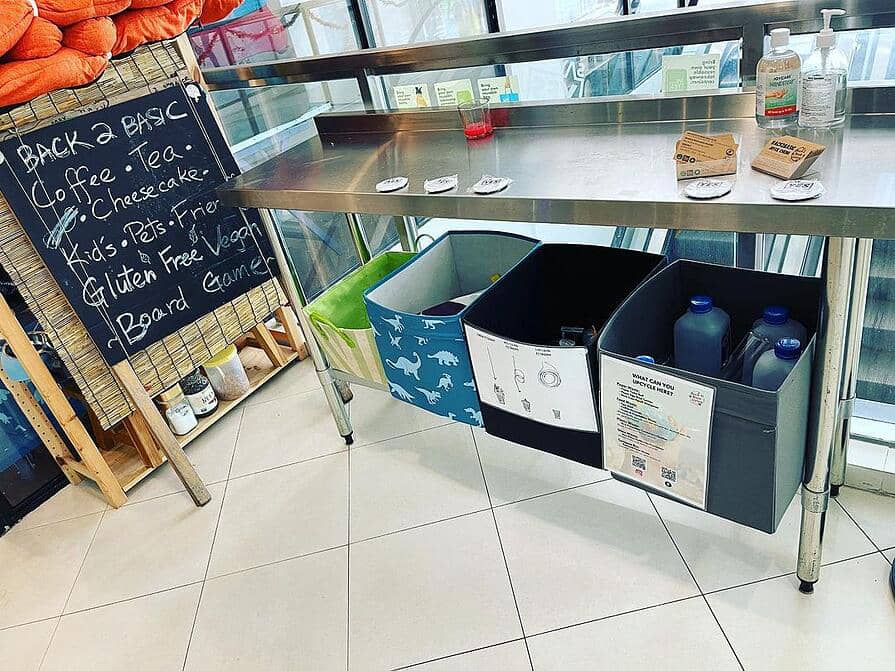
Image Credits: Back 2 Basic by JC Cheng
4. NomvNom
Established in 2015, NomvNom puts a refreshing vegan spin on modern fast-food options like burgers, pizzas and pastas, in its mission to contribute to the sustainability movement by promoting a plant-based diet. With the promise to ensure the utmost quality of its food, the brand is committed to using premium ingredients to tantalise the tastebuds of both vegans and non-vegans alike, serving up handmade wholesome burger buns and patties, delectable straight-cut truffle fries, and hearty soups thick with goodness.
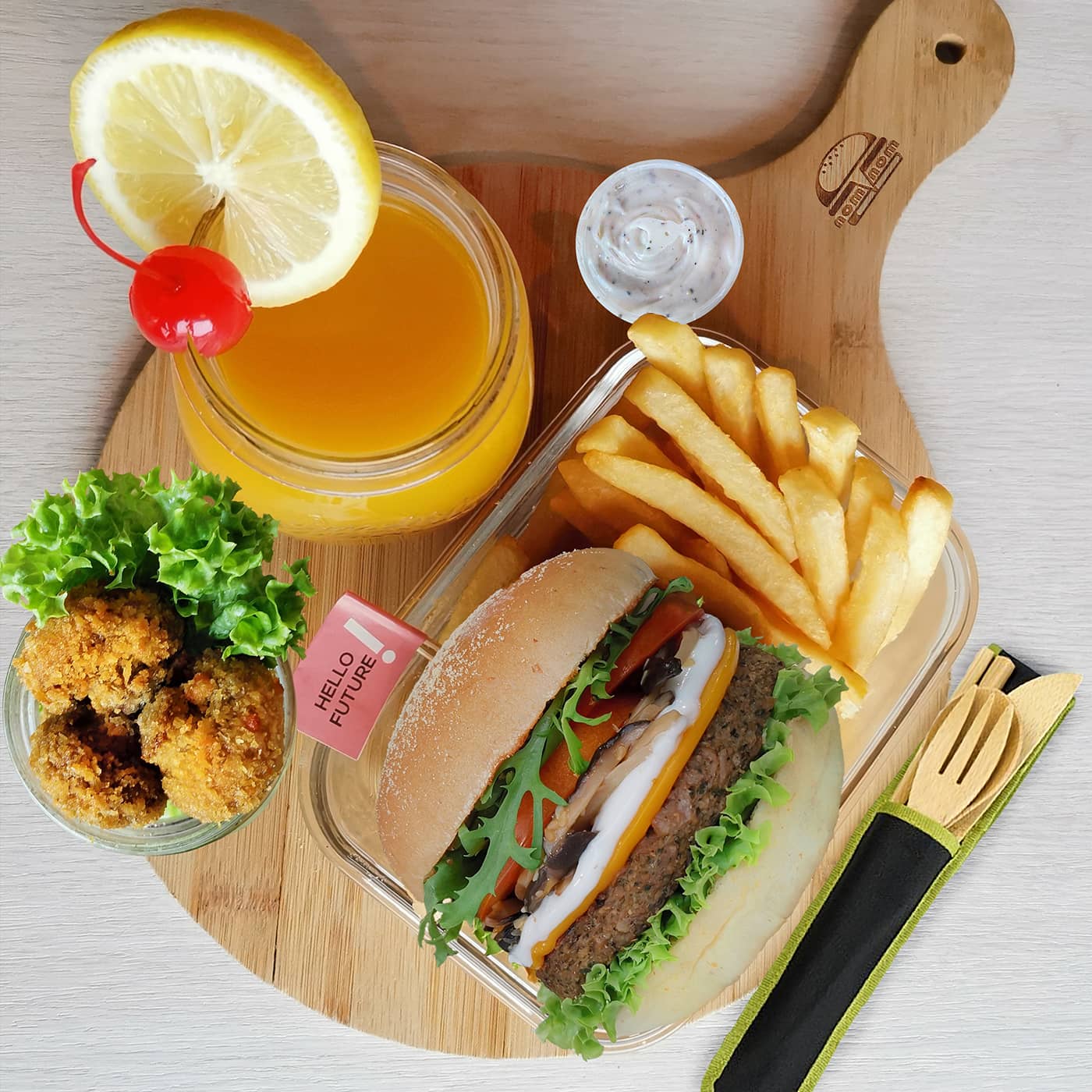
Image Credits: NomvNom
With its meals easily consumed on-the-go, NomvNom highly encourages customers to BYO containers to reduce the need for any single-use plastics and earn a 10% discount! As part of its dedication to make a difference for the environment, the brand also invests in disposable cups and containers made with recycled materials to minimise the strain on the earth’s finite resources and operates on a no-straw policy.
So, are you ready to take on the challenge of going plastic-free (or even just using less plastic) this Plastic Free July? Remember, embarking on a more sustainable lifestyle does not mean enacting a 180-degrees change overnight! By adopting the mindset of gradual but continuous effort, it will all add up to a considerable difference overtime.
Psst, to help you get a head start on your green journey, do pop over to our Geneco Facebook page or Instagram account where we’re currently hosting a Plastic Free July giveaway! Simply name one of the four brands mentioned in this blog that offers a discount when you BYO and you could be one of the 10 lucky winners to walk away with a $50 FairPrice e-voucher and an exclusive Geneco Green Starter Kit!
What’s more, in celebration of our nation’s 57th birthday, we would like to invite you to join our #GreenDiscoverSG initiative.
As we do our part to reduce plastic waste for a greener future, take the chance to look around us. Who knows, you may discover an amazing green space that is unimaginably found in Singapore and if you do, capture a photo of it and share with us. You might stand to win up to $1,500 cash and FREE 1-year electricity with Power Eco Add-on worth $1,250.
Let’s continue to #PowerTheChange and build a sustainable Singapore together.
Because green is more than a colour.
It is our future.
Be the wave of change this World Ocean Day
- Home
- Residential
- Blog
- Archive by Category "Knowledge" (
- Page 3 )
[Post Date]
Be the wave of change this World Ocean Day
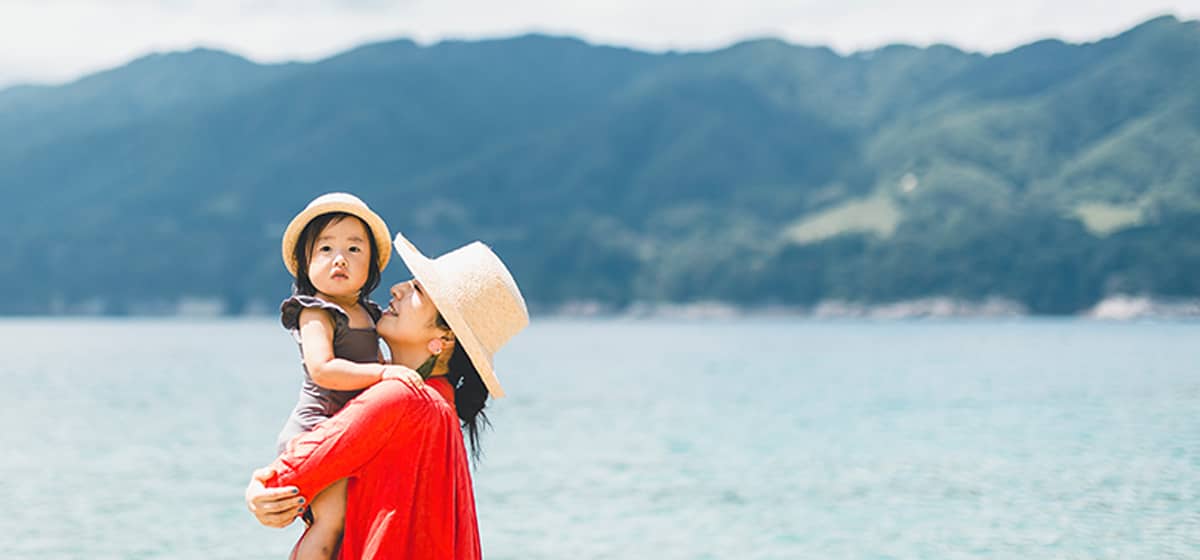
Oceans play a vital role in supporting life on Earth. In addition to serving as an important source of food for billions of people around the world, they are instrumental in contributing to the air we breathe! Covering 70% of the Earth’s surface, the ocean produces over half of the world’s oxygen and absorbs 50 times more carbon dioxide than our atmosphere, which is critical in our fight against climate change. What’s more, oceans also help in regulating temperature on Earth given that 98% of the heat from sun rays are absorbed by these massive water bodies.
In recent times, however, human activities have led to the pollution of these enormous water basins. According to the National Geographic, there are more than five trillion pieces of plastic floating in our oceans. That’s a massive amount of waste choking our seas, making it unsafe for sea creatures to live and thrive in. The Sea Turtle Conservancy estimates that over a million marine animals such as fish, dolphins, sharks, turtles and birds, have died each year due to plastic debris in the ocean.
As we celebrate World Ocean Day today (8 June), let us all be more mindful in how we can contribute to keep our oceans clear, blue and sparkling. In this blogpost, we share some day-to-day green habits that you can cultivate to play your part!
1. Educating ourselves on ocean life
Knowledge is power! The very first tip we have is to educate ourselves on the wonders of the ocean and the rich biodiversity it is home to. By doing so, it offers us an intimate perspective of this wonderous ecosystem while understanding the role we play in saving it.
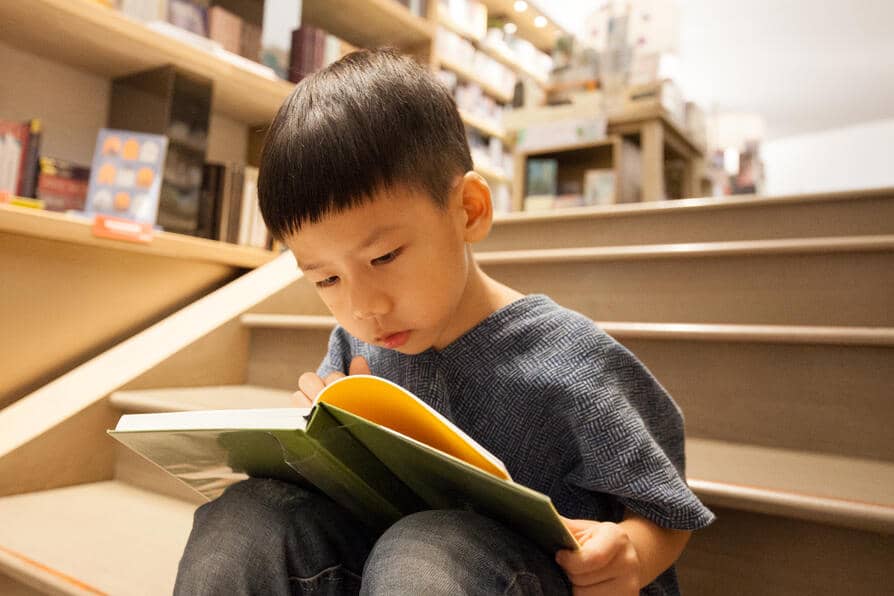
Image Credits: Nylon Coffee Roasters
From books to documentaries, dive into some of the resources available right at our fingertips! Some of our favourites include Mission Blue that takes a fascinating look into the life and work of famed oceanographer and marine biologist Dr Sylvia Earl, and Our Planet – Coastal Seas, narrated by none other than Sir David Attenborough.
Or, if you’d prefer a more local touch, check out this documentary by Channel NewsAsia that explores the rich population of marine life in our Singapore waters. Keep your eye out for the many rare and endangered species of seahorses, sharks and sea turtles and be enchanted by the vibrant coral life found in our local waters. With over 250 species of hard corals found in Singapore’s seas out of over 500 species within the region, this is a film that you don’t want to miss!
2. Organise a beach clean-up day
How often have you found yourself being confronted by a trail of trash lining the otherwise pristine beach? According to a study, it was found that 48% of marine debris originated from onshore sources such as litter – an awful lot of pollution stemming from our coastal activities. Besides being unsightly, these rubbish could end up in our oceans and cause devastating impacts to our marine ecosystem.
In addition, it is estimated by the International Union for Conservation of Nature (IUCN), that 80% of the trash found in the ocean is made up of plastic. This is especially harmful as plastic will break up into smaller pieces to become microplastics that may be ingested by small sea creatures, enter the food chain, and eventually reach our plates as seafood.
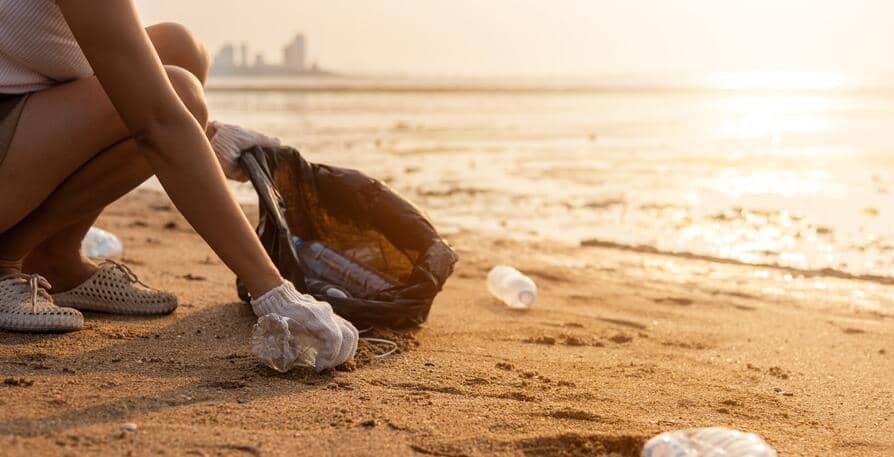
Source: The Sustainability Project
Ultimately, it’s up to us to break this cycle. Besides reducing the use of plastics, you can also do your part for the deep blue by organising your very own beach clean-up day. With each small piece of trash picked up and properly disposed, you’re preventing it from getting swept or blown into the ocean.
Organising a beach clean-up is easy – simply bring along a recyclable trash bag, some biodegradable protective gloves and a pair of tongs. Make this a weekly affair with the family by heading down to the beach to enjoy the lovely breeze and beautiful sunset while doing your part for the environment as well! In addition to being a fun bonding activity for the entire family, beach clean-ups also serve as great learning opportunities for both the young and old. As you observe the number of plastic bags, cigarette butts and even the occasional toothbrush being picked up, it forces us to think about the impact our actions have on our everyday habitats.
3. Eliminating the use of harmful products
Did you know? You could be polluting our oceans even from your home! For many personal care and beauty products, they contain marine-toxic ingredients that often find their way into our oceans when they are washed down our sinks or drains. One particularly dangerous ingredient is microplastics that is commonly found in exfoliating skincare products.
Another innocuous item that is bad for our ocean are laundry detergents, that typically contain many man-made chemicals. When washed into the ocean, the chemicals in these products reacts with the ocean water and could potentially ruin the marine ecosystem. For other detergents containing surface-active ingredients that are often touted for “lifting stains” off clothing, these are also extremely dangerous to aquatic life as they break down the mucus layer that protects fishes from parasites and bacteria.

Image Credits: Back 2 Basic by JC Cheng
Sounds frightening? You can do your part by choosing products that are made with all natural ingredients but equally effective. With the sustainability gaining momentum in Singapore, there are a ton of local brands that are offering eco-friendly choices. Check them out at Your Sustainable Store, The Sustainability Project and The Social Space!
4. Shop wisely with sustainable seafood
While you’d have probably heard the phrase “there are plenty more fishes in the sea” before, the fact of the matter is that, there isn’t. Not in the context of actual fishes, that is. According to the World Bank, almost 90% of our global marine fish stocks are exploited or overfished.
With the world’s appetite for seafood showing no signs of slowing down, it is fuelling the growth of unsustainable fishing methods such as bottom trawling and longlining. Often, these methods of fishing are very destructive for the marine ecosystem as they destroy reefs and result in numerous by-catches such as turtles and dolphins. In Southeast Asia, it is estimated that for every kilogram of fishes we get from trawling, 1.43kg of accidentally caught fish and other sea creatures are thrown back into the ocean.
But, while we understand that it might be hard to give up seafood completely, there are little steps that you can take to incorporate more sustainable choices in your life. For instance, keep an eye out for internationally recognised eco-labels such as from Marine Stewardship Council (MSC), Aquaculture Stewardship Council (ASC) and Best Aquaculture Practices (BAP) that indicate seafood that are derived from sustainable fishing methods. Alternatively, given that many of us purchase our seafood from local stalls at wet markets – which often do not have such certifications due to cost of implementation – you can check out this comprehensive list prepared by WWF that details how sustainable most of our well-loved seafood are!

Image Credits: NomvNom
If you prefer dining out instead, there are plenty of choices as well! Check out Scaled by Ah Hua Kelong, that offers a ‘farm-to-table’ concept where their fresh seafood is harvested daily from their local farm, as well as the restaurants under Grand Hyatt Singapore that are all certified with an international eco-friendly label.
While the above tips may sound small, if each of us were to make these small ripples of change in our lifestyles, together we can create big waves and make a collective difference in conserving our ocean. So, do practice and share these little nuggets of wisdom with your family and friends!
Together, let’s #PowerTheChange to protect our deep blue for future generations to enjoy and delight in!
Eco- and kid-friendly outdoor activities to try this June holidays
- Home
- Residential
- Blog
- Archive by Category "Knowledge" (
- Page 3 )
[Post Date]
Eco- and kid-friendly outdoor activities to try this June holidays

As we make plans to recharge and rejuvenate with our children this June school holidays, why not take the chance to inculcate an eco-friendly mindset amongst our young ones? With the three key environmental dates this month – World Environment Day, World Ocean Day, and World Rainforest Day – June is a special month and a timely reminder for us to protect our Mother Earth.
With the minimal Covid-19 restrictions this mid-year break, check out the abundance of outdoor nature activities available across our sunny island that are great to educate the kids on the importance of our natural environment while promising great fun at the same time! In addition, heading outdoors also provides a range of benefits including improved overall health and wellness and stress reduction while serving as valuable bonding time together with the entire family. What’s more, introducing kids to our great outdoors can also help them cultivate an appreciation for nature!
With the many fun things to do, there’s no worrying about keeping the kids thoroughly entertained. In today’s blog post, we introduce some of the best outdoor family activities to check out for an excitement-filled month:
1. Discover activities on Seek Sophie
Dive into the myriad of family-friendly activities available on Seek Sophie, a platform that connects individuals with unique experiences run by small local businesses. This June holidays, Seek Sophie has put together an array of adventures that promises great fun for both the young and old, ensuring that you and your little ones can spend precious time bonding.
One of our favourite activities would be the intertidal walk to discover marine biodiversity including hermit crabs, sea cucumbers, swimmer crabs and sand dollars. Have a whale of a time traversing the muddy terrains and getting your feet wet while learning fascinating facts about these amazing creatures! Or, if you’d prefer to take a step further and play your part in conserving the habitat, sign up for the Marine Scientist Day Camp instead, which includes a beach clean-up session. This 4-hour camp also features a squid dissection class – perfect for the curious young minds.
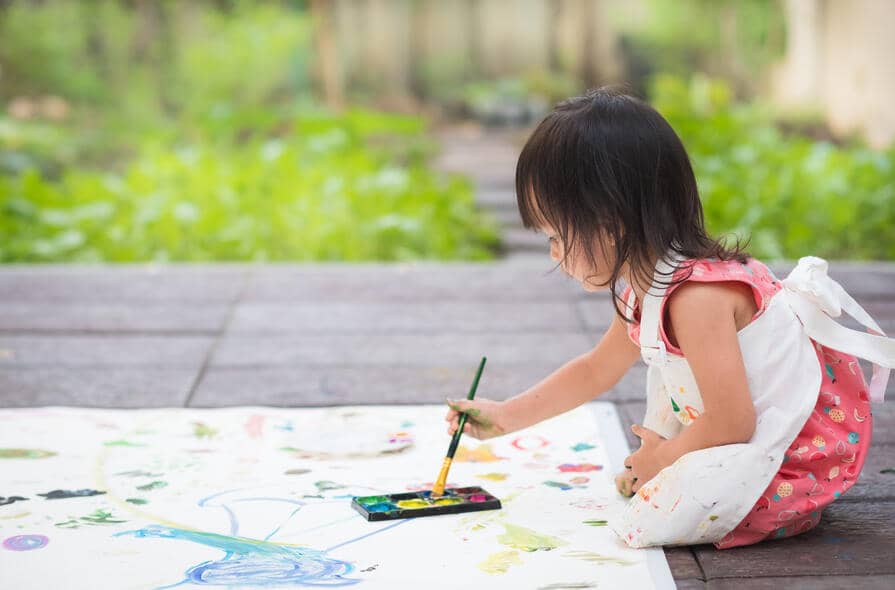
Image Credits: Nylon Coffee Roasters
Looking for an activity to burn off your kids’ endless energy? Check out this nature-themed playscape for an afternoon of fun! Suitable for kids as young as two years old, this immersive outdoor space is anchored on the four pillars of movement, investigation, creation and bravery, to suit the interests of every child. With activities such as an obstacle course, fishing in a longkang (Chinese dialect for drain) and painting with mud, enjoy limitless possibilities for adventurous play and exploration while educating our young ones on the joys of connecting with the natural world.
The best part about Seek Sophie? The team offsets carbon emissions of all experiences booked on the platform, ensuring that you have carbon-neutral fun! Since 2018, more than a million tonnes of carbon have been offset by the platform, leaving a positive footprint on both the local communities and the environment.
2. Exploring Singapore’s water bodies through kayaking
If you’re up for some water sports, check out Singapore Sports Hub’s Water Sports Centre where you can rent a kayak and enjoy the city’s iconic skyline from the Kallang Basin while soaking in some vitamin D. If you’re lucky, you may even spot the family of resident otters who call the area their home!
New to kayaking? Not to worry! Join the Kayak Orientation Programme to get familiar with the activity and even learn some tips and tricks on manoeuvring your kayak. Not forgetting our experienced paddlers, Water Sports Centre also provides Kayak 1 and 2 Star Personal Skill Awards for those looking to get certified in kayaking.
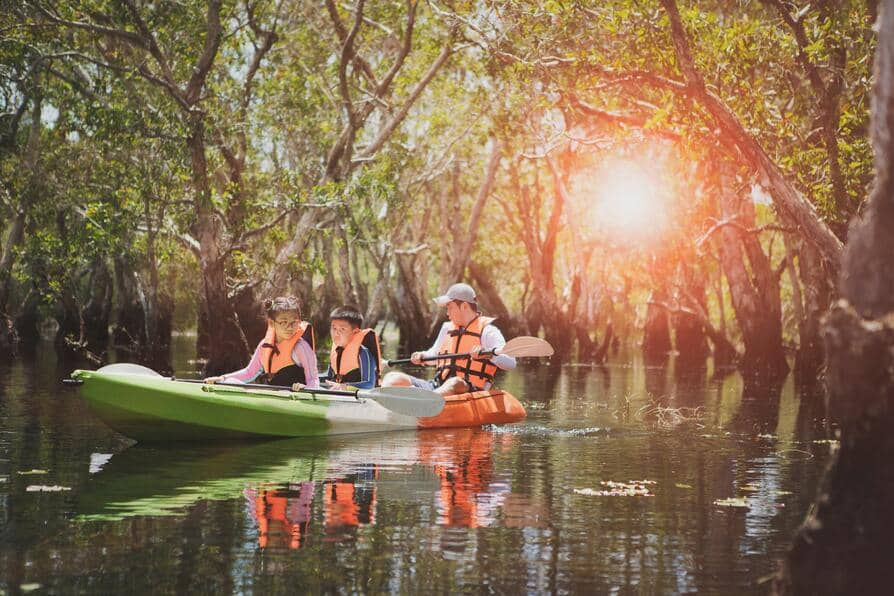
Source: The Sustainability Project
For those who prefer a more rugged experience in nature, check out Lower Seletar Water Sports Centre, which offers kayak rentals. Take an idyllic trip down the peaceful reservoir and immerse yourself in the sights and sounds of nature. You may even catch a sight of the majestic White-bellied sea eagle, Peacock bass or the Collared Kingfisher! There’s no better way to experience the best of Singapore’s nature. Just note that adult supervision is required for children younger than 13 for a safe experience!
3. Picking up a new roller blading skill
Take advantage of the many park connectors and smooth terrain in Singapore by lacing up those rollerblades and gliding around our island home. Though Singapore may be small, the lush greenery around us makes it a wonderful natural playground and a haven for people of all ages.
To bring your rollerblading experience to the next level, head out to the various green spaces in Singapore, including Sembawang Park where you can enjoy the sea breeze and tranquil sights along the sea. If you’re up to explore the north-eastern area of Singapore, check out the North Eastern Riverine Loop which is a haven for nature enthusiasts. Glide along the 24km-long scenic trail and you may even spot some unique native biodiversity along the way! For the best experience, we’d recommend heading to these parks in the evenings where you can catch the breath-taking sunset while soaking in the best of nature Singapore has to offer.
While this activity requires some practice, what better time than this month-long holiday to pick up a new skill? Many places in Singapore, such as Skateline and SkateXtreme offer lessons suited for various levels .You can be sure that you and your little ones will be roller-blading around independently in no time.
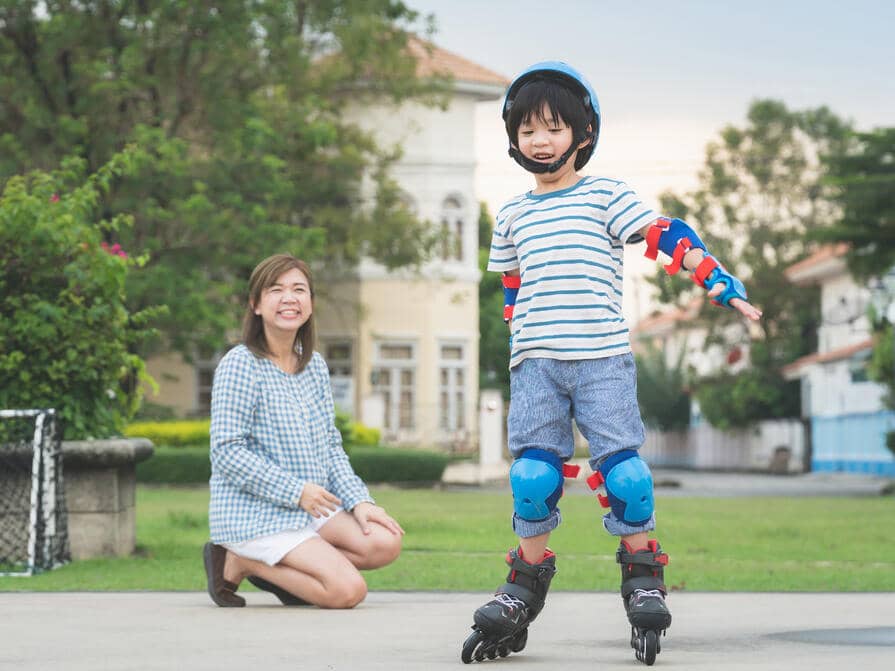
Image Credits: Back 2 Basic by JC Cheng
4. Ziplining down Singapore’s largest Treetop Obstacle Course
For an unforgettable day out, check out Forest Adventure – Singapore’s largest treetop adventure park at Bedok Reservoir! Immerse yourself in some adrenaline-pumping fun with courses of varying difficulties that are perfect for all ages. From navigating through bridges suspended on skinny logs to swinging mid-air Tarzan-style amidst the foliage, it’s promised to be an exhilarating experience for the entire family! Not to worry if you’re a first-timer – Forest Adventure is staffed by super friendly instructors who are always ready to offer some tips as you manoeuvre each obstacle.
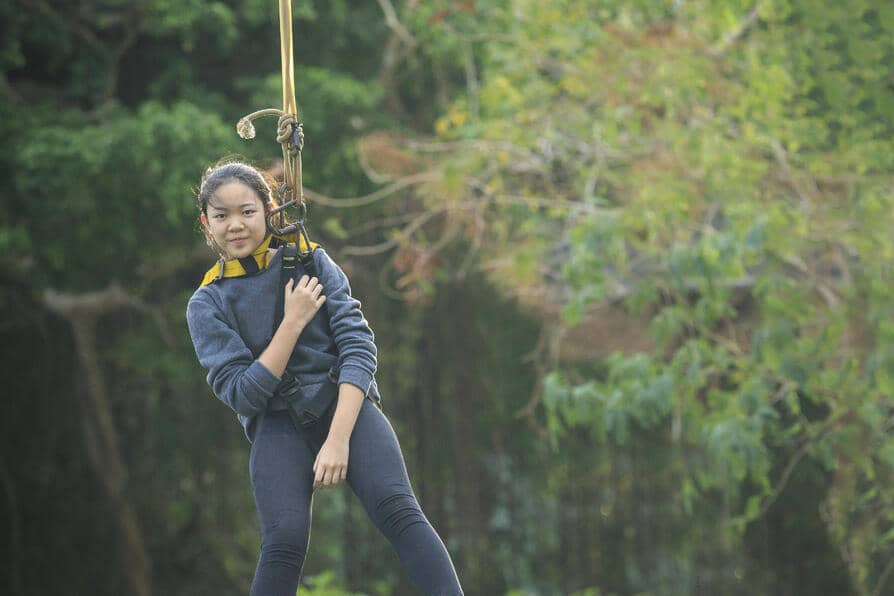
Image Credits: NomvNom
Up there in the tree canopies, you can almost mute out the hustle and bustle of city life and immerse yourself in the calming sounds of nature to enjoy the breath-taking view of the reservoir fully.
And there you have it! Four of our best recommendations as you make plans with your family this June holidays. As we enjoy the great outdoors and bond with our loved ones, let’s remember to be mindful and conserve our environment by leaving nothing but footprints at each location.
Together, we can #PowerTheChange for a greener tomorrow!

